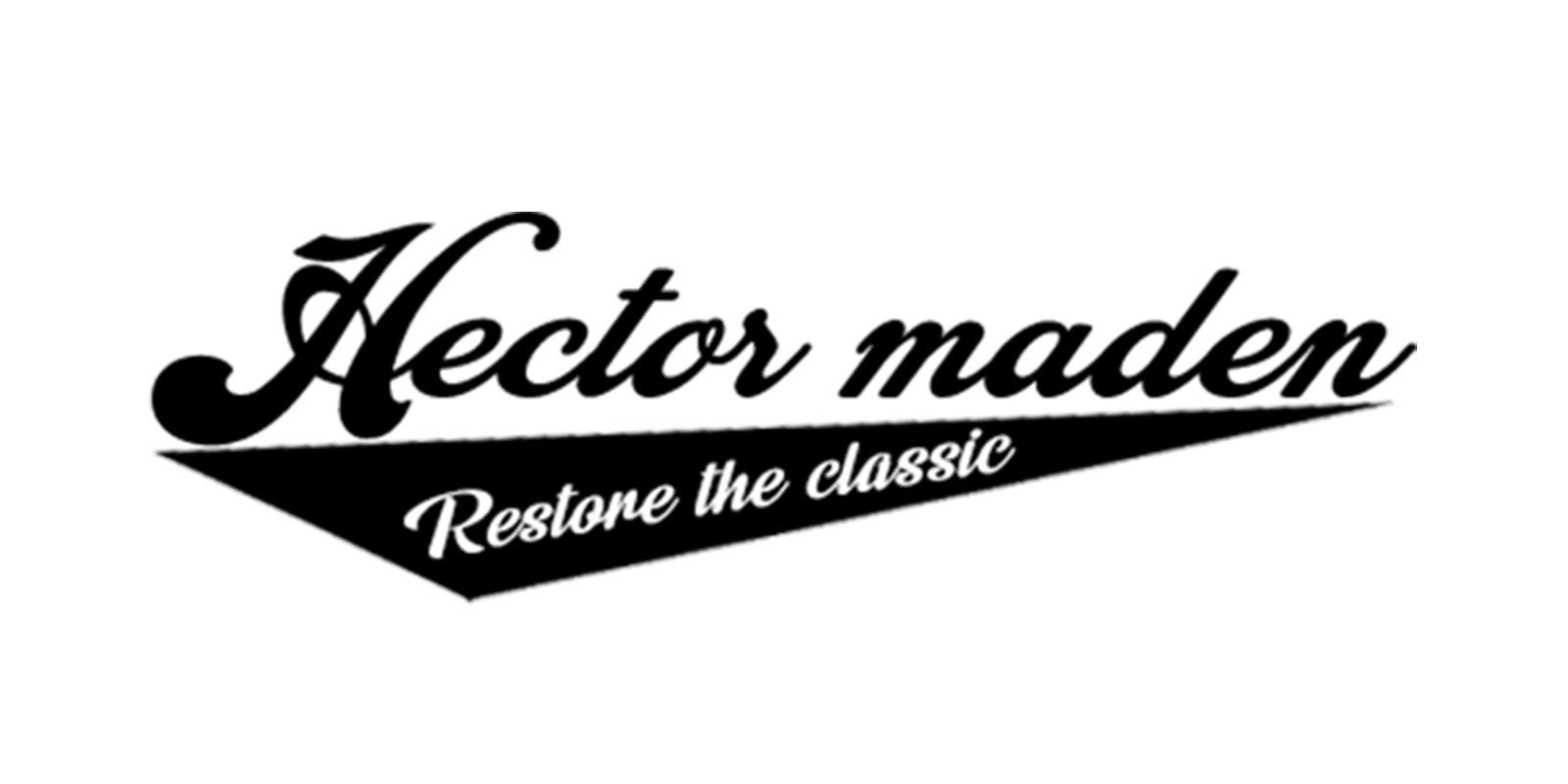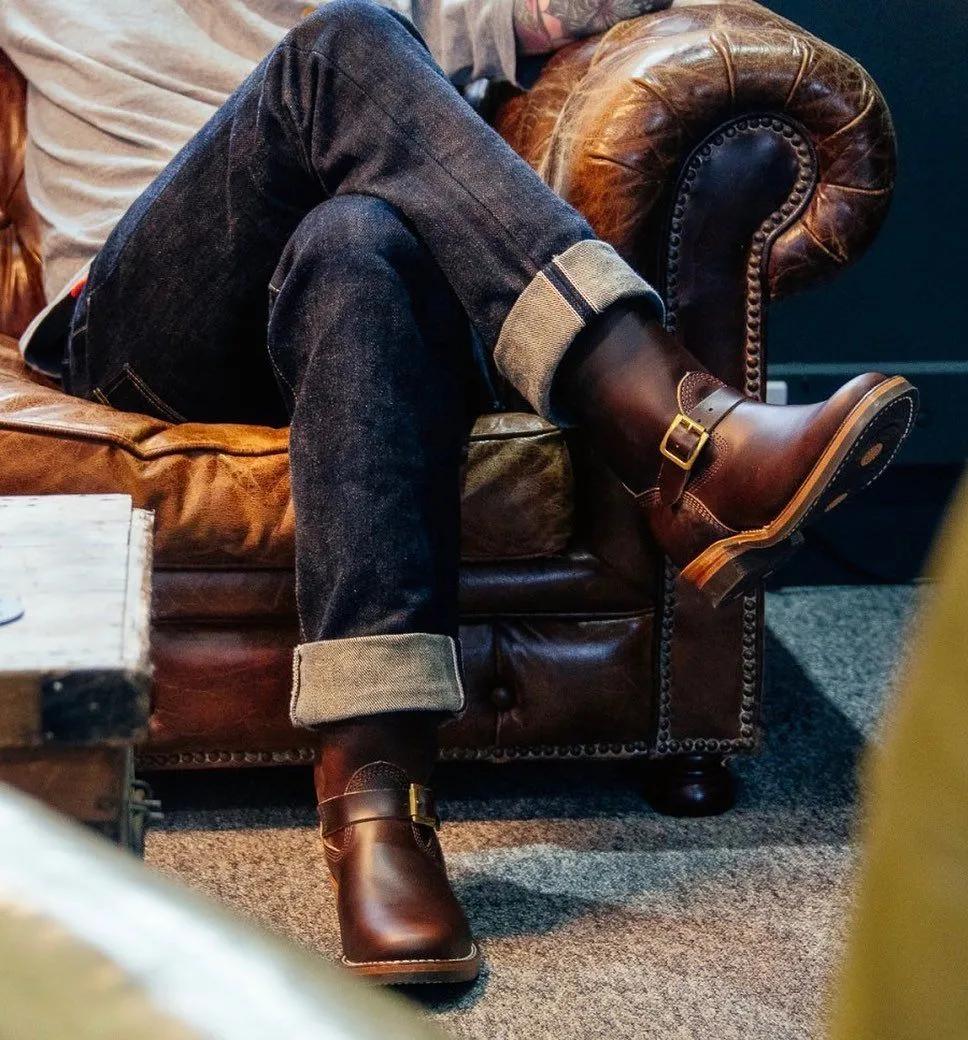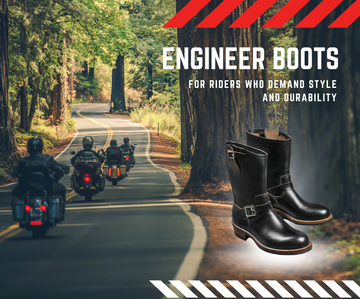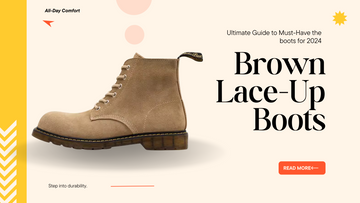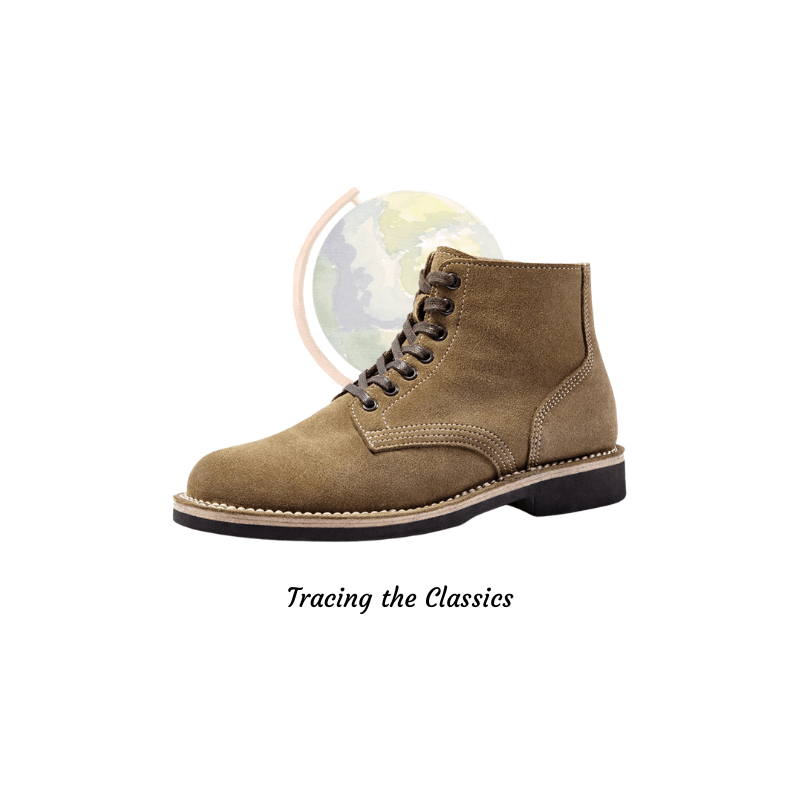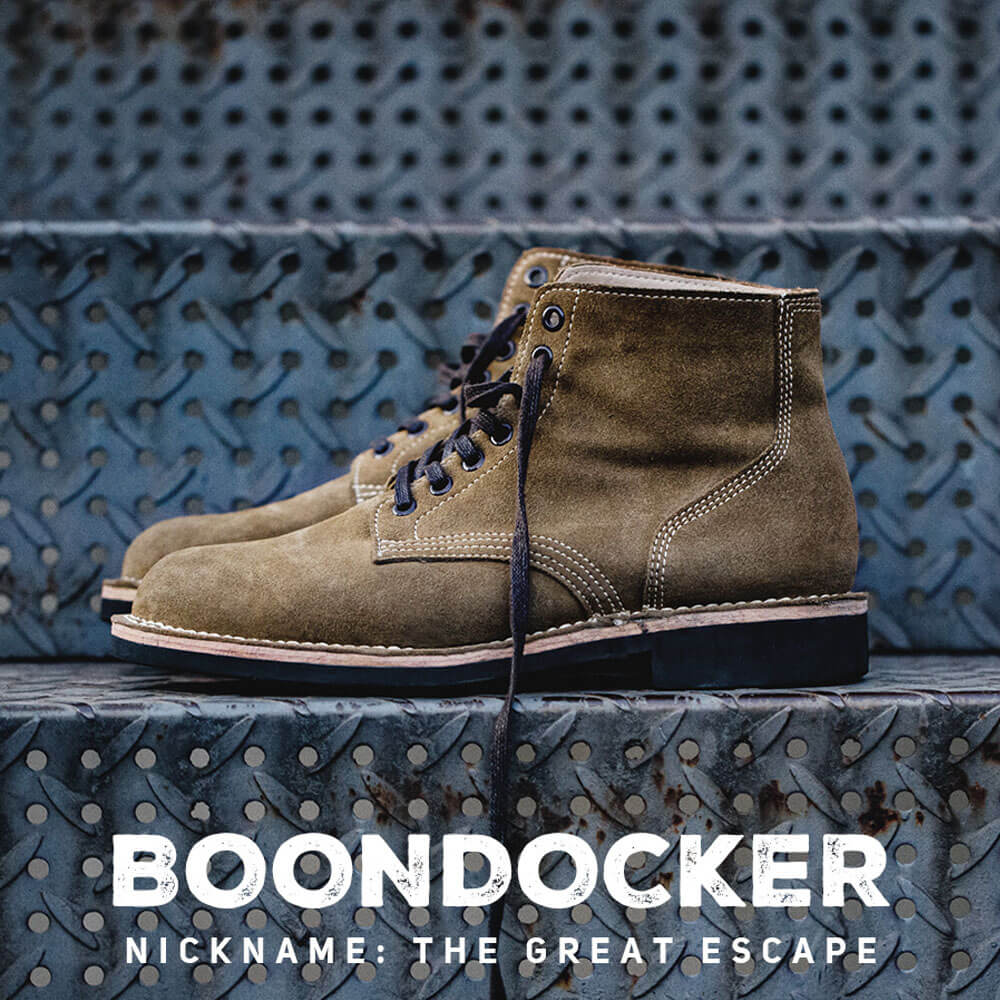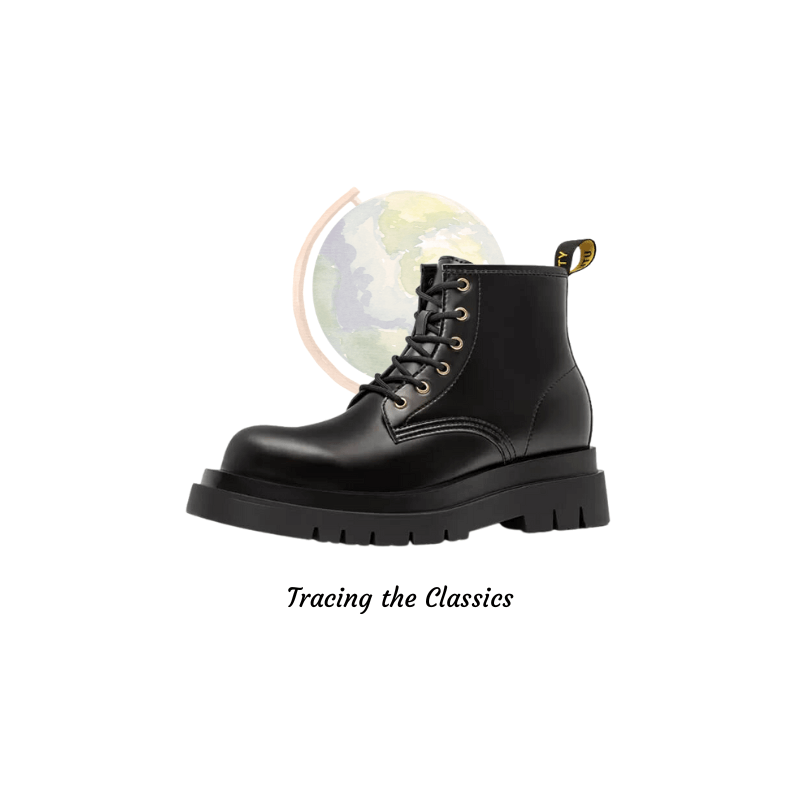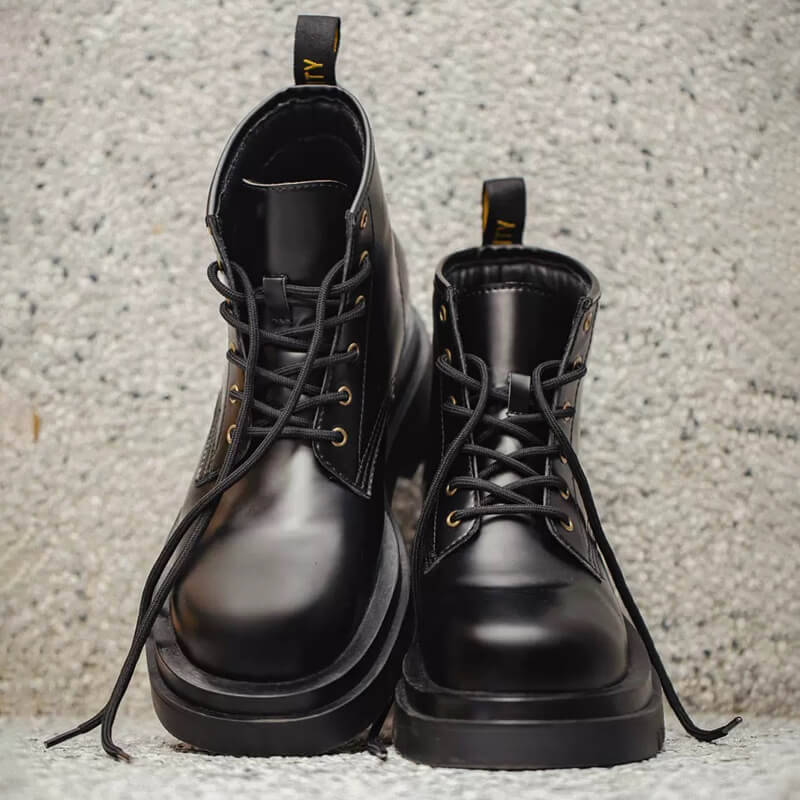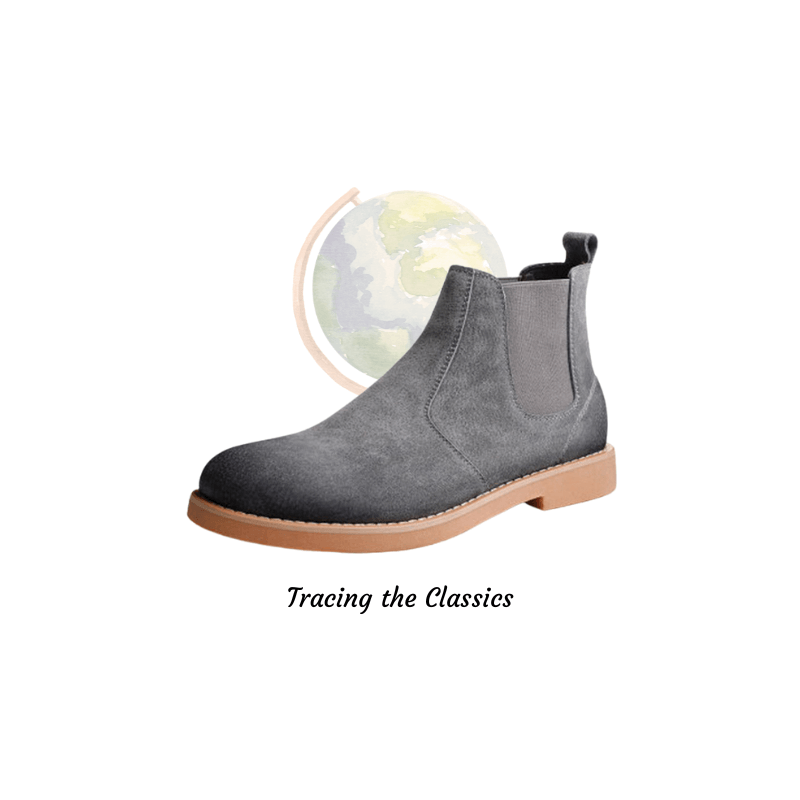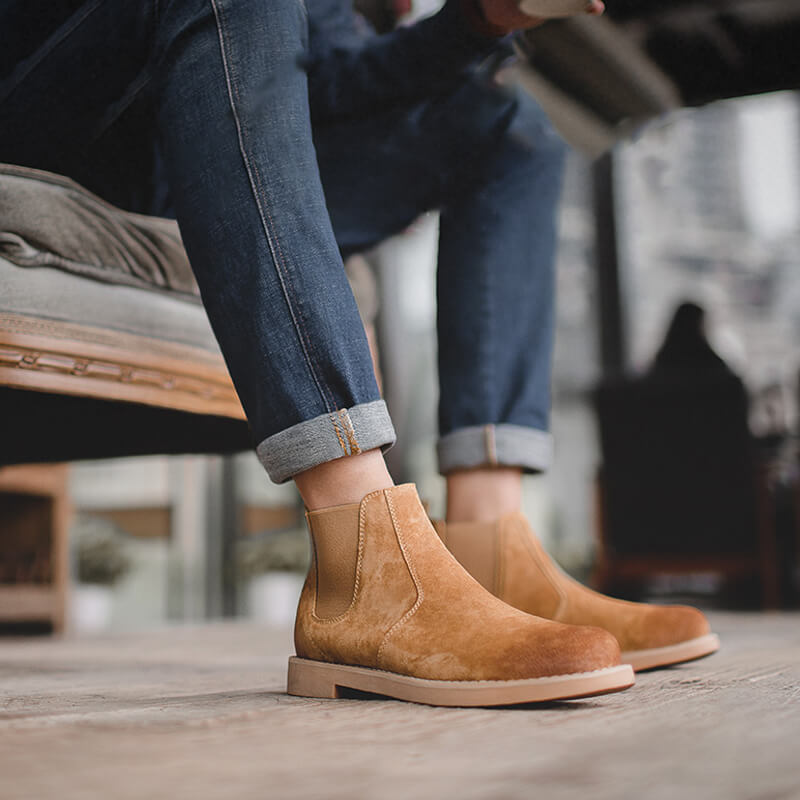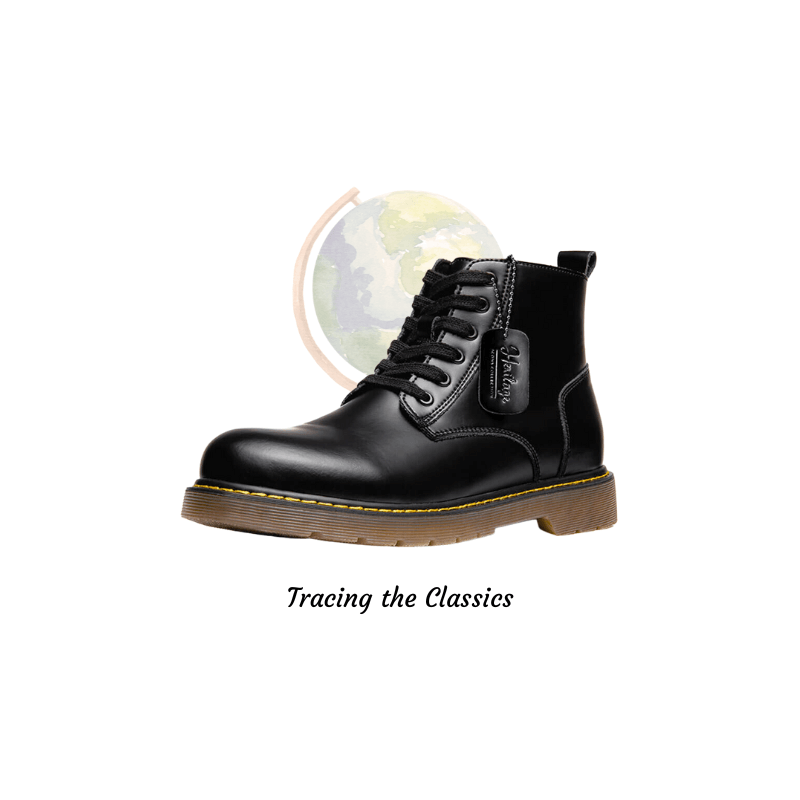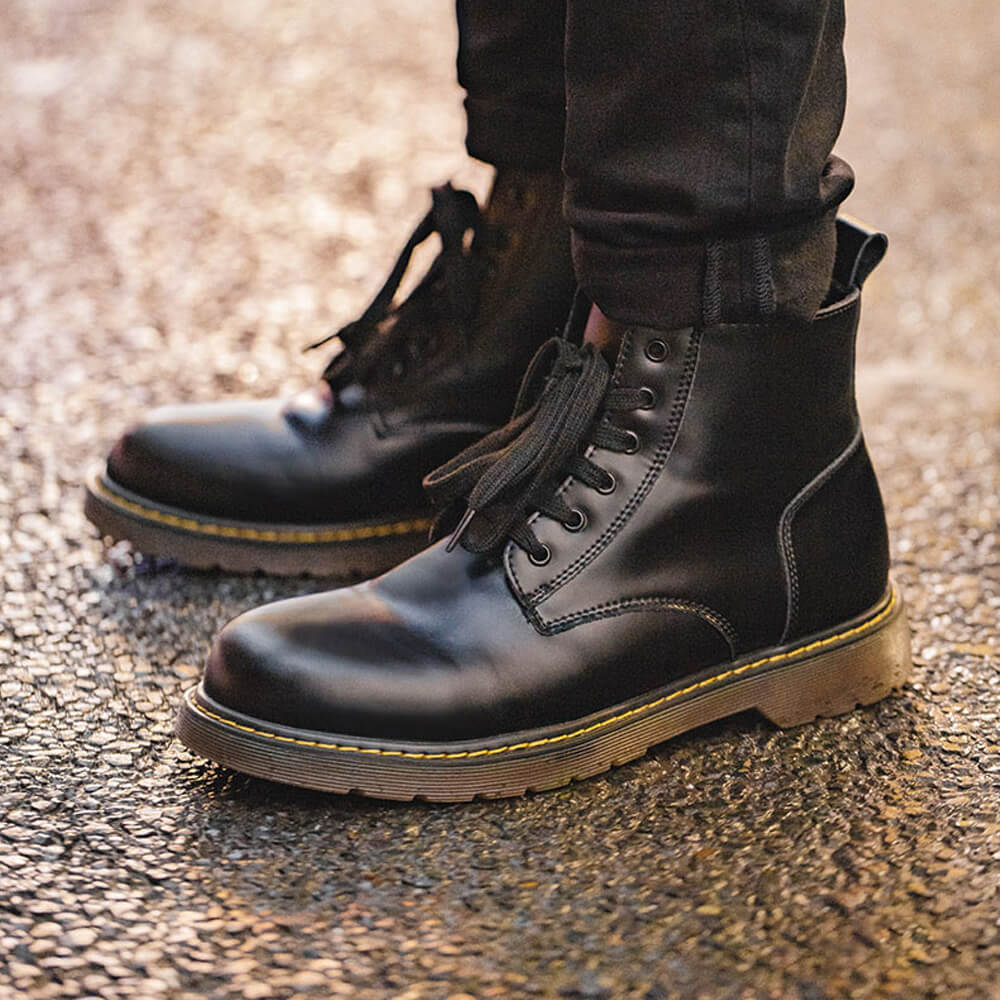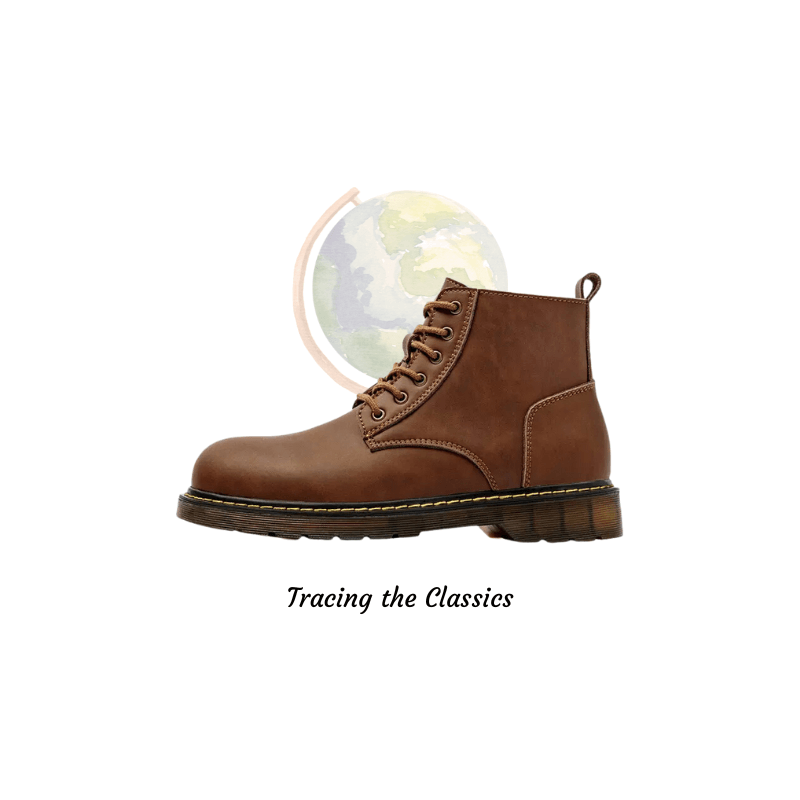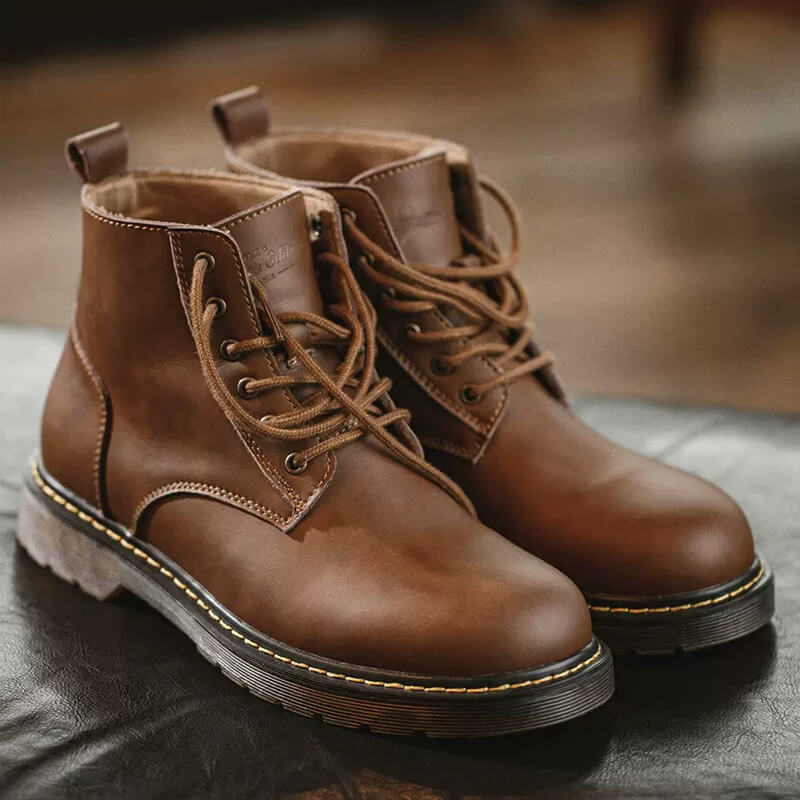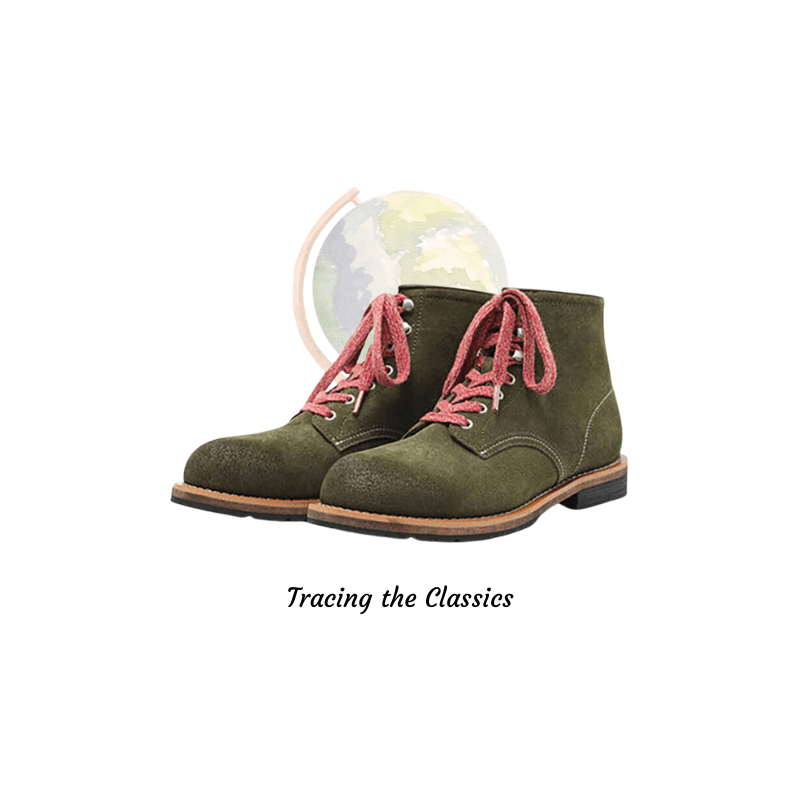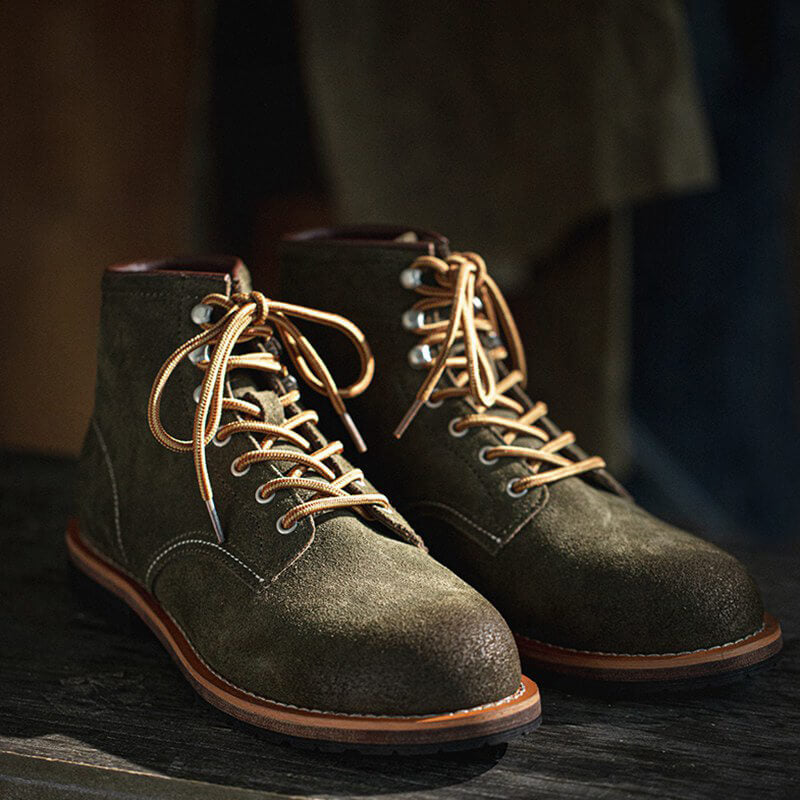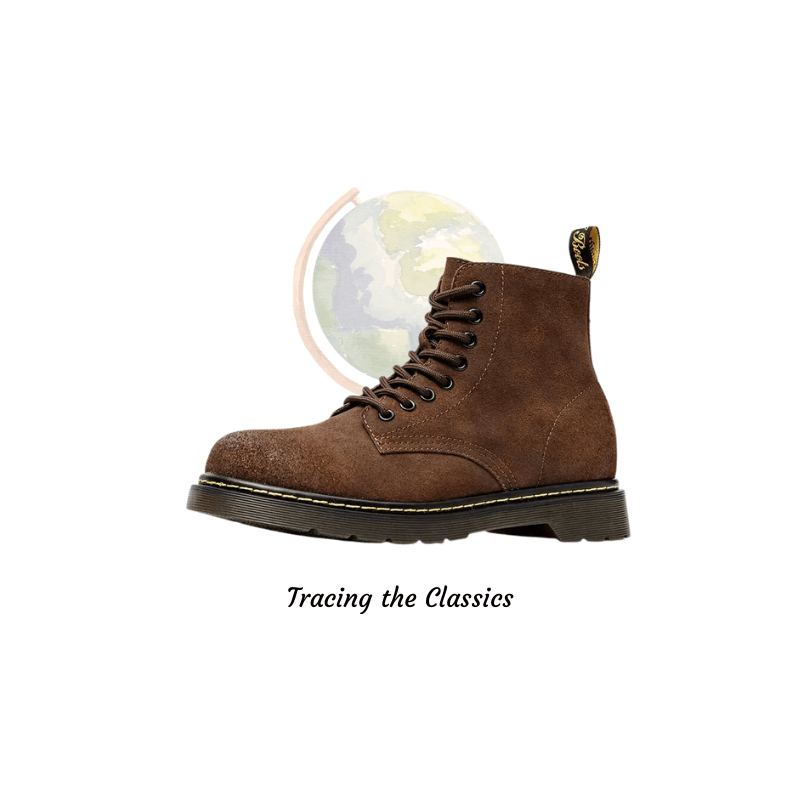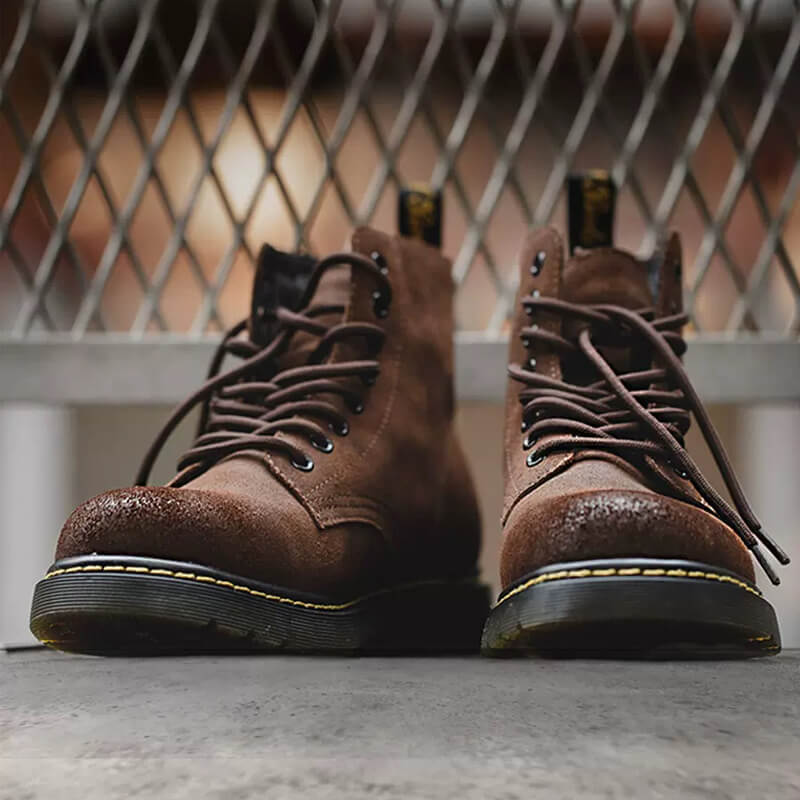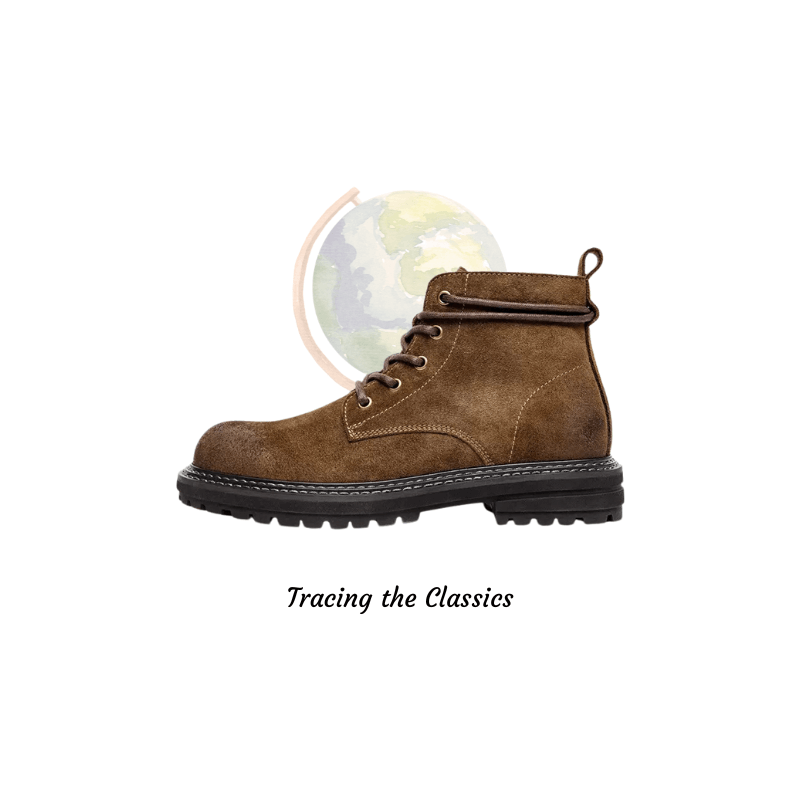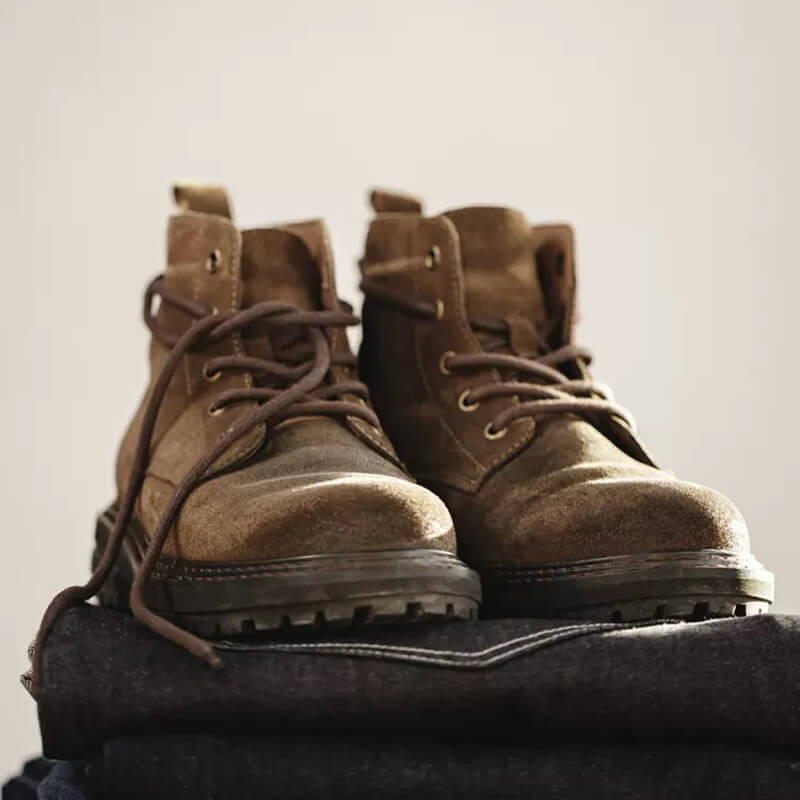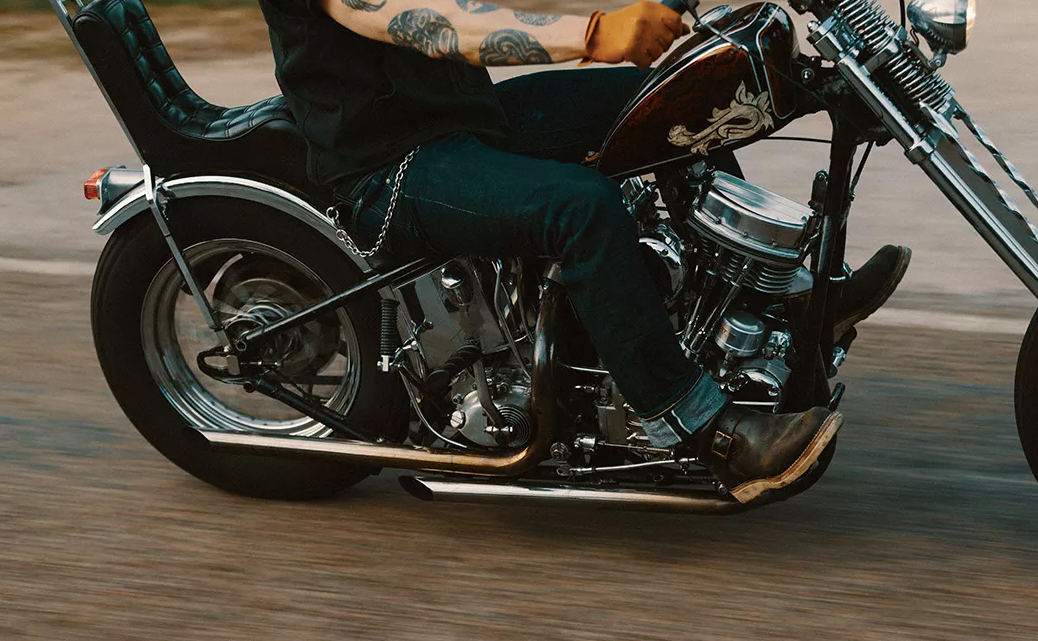
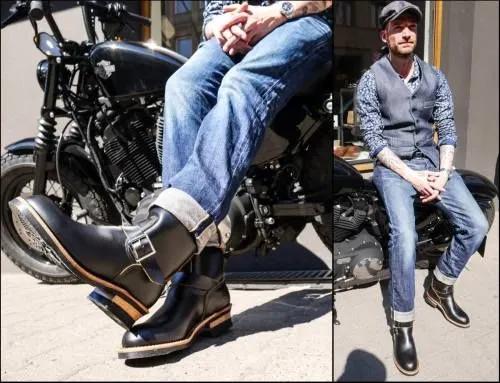
The first generation of engineer boots were made of thick and hard cow leather, with a long boot barrel and metal buckles at the ankles. Occasionally, buckles were also equipped at the mouth of the boots. The height of the boot barrel is 20cm or higher, the toe cap is round, the sole is made of thick leather, the heel is about one to three quarters of an inch high, slightly tilted forward, and the edge is sunken. The first edition and the most classic and orthodox engineer boots were black, and later there were brown and other versions.
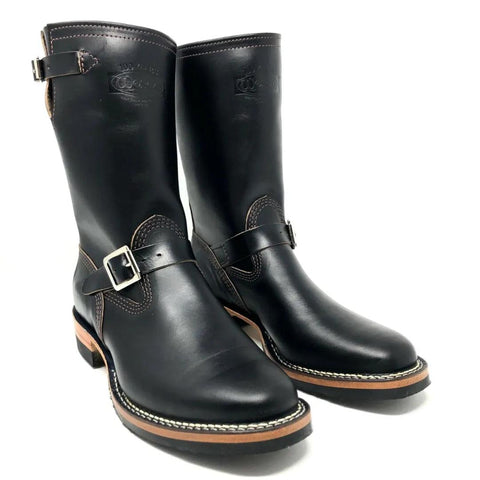
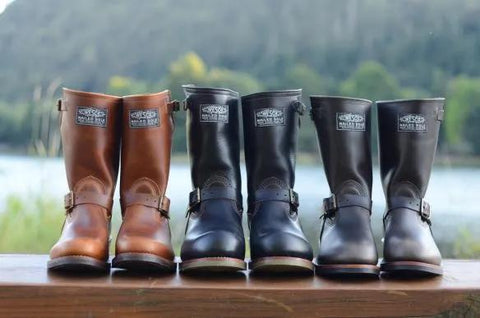
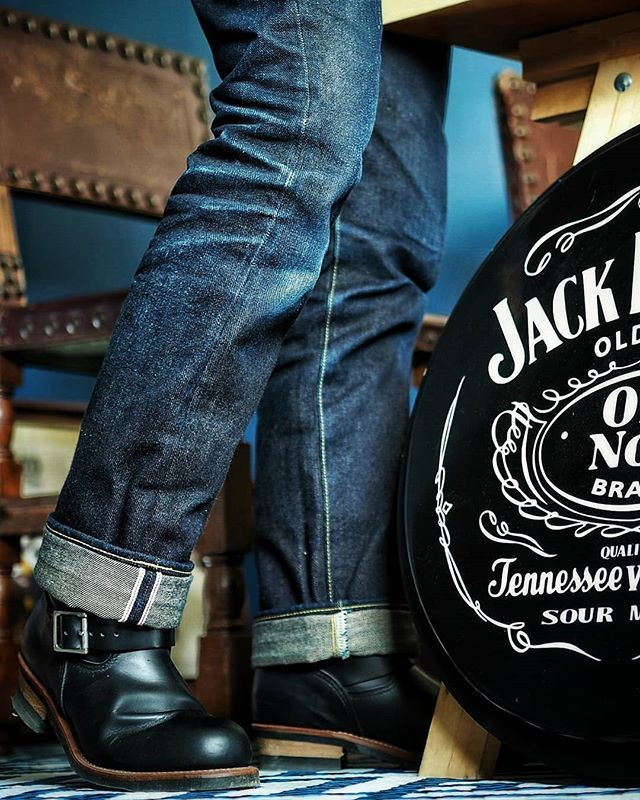
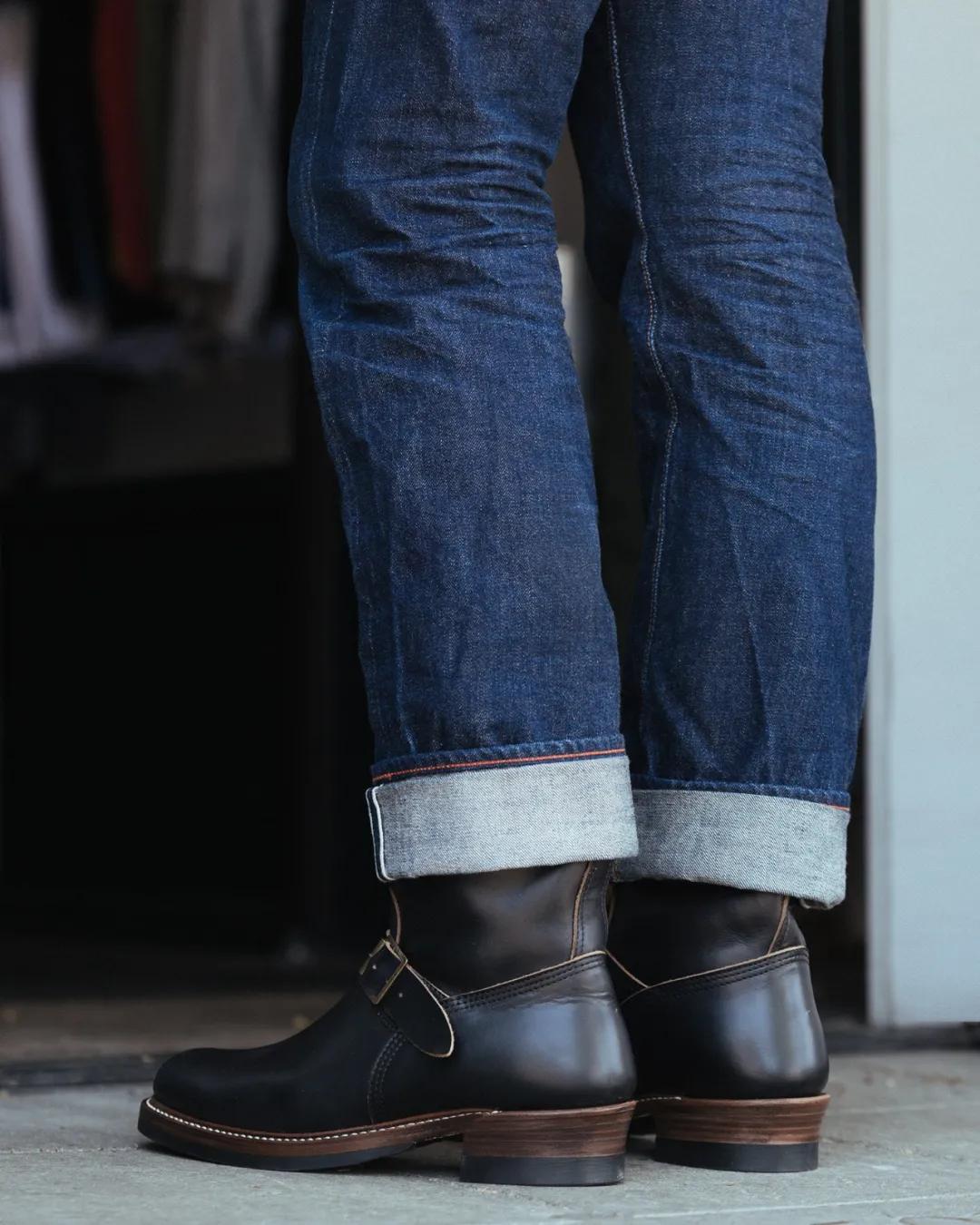
The origin of engineer boots
Engineer boots were first born in the 1930s, which was also the era of train development. It was originally designed as a "slip on" boot for railway workers and firefighters. The English name of the train driver working on the steam locomotive is engineer, which has become the origin of the name of the engineer boot.
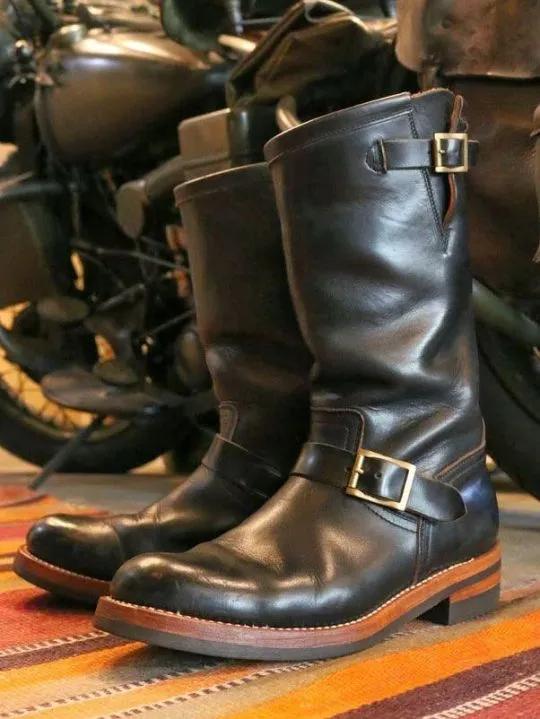
At that time, the steam train still needed artificial fueling to run the power train. The locomotive staff also had a task to shovel coal into the engine. The high boots of engineer boots can protect the wearer's feet and legs from being injured by coal, hot embers, sharp edges of shovel, etc. As the engineer boots are loose and easy to wear and take off, they can also be quickly taken off in case of accident to avoid scalding. In short, it is very safe to wear engineer boots in high temperature and dangerous working environment. In the 1930s, engineer boots became popular among the whole blue collar class.
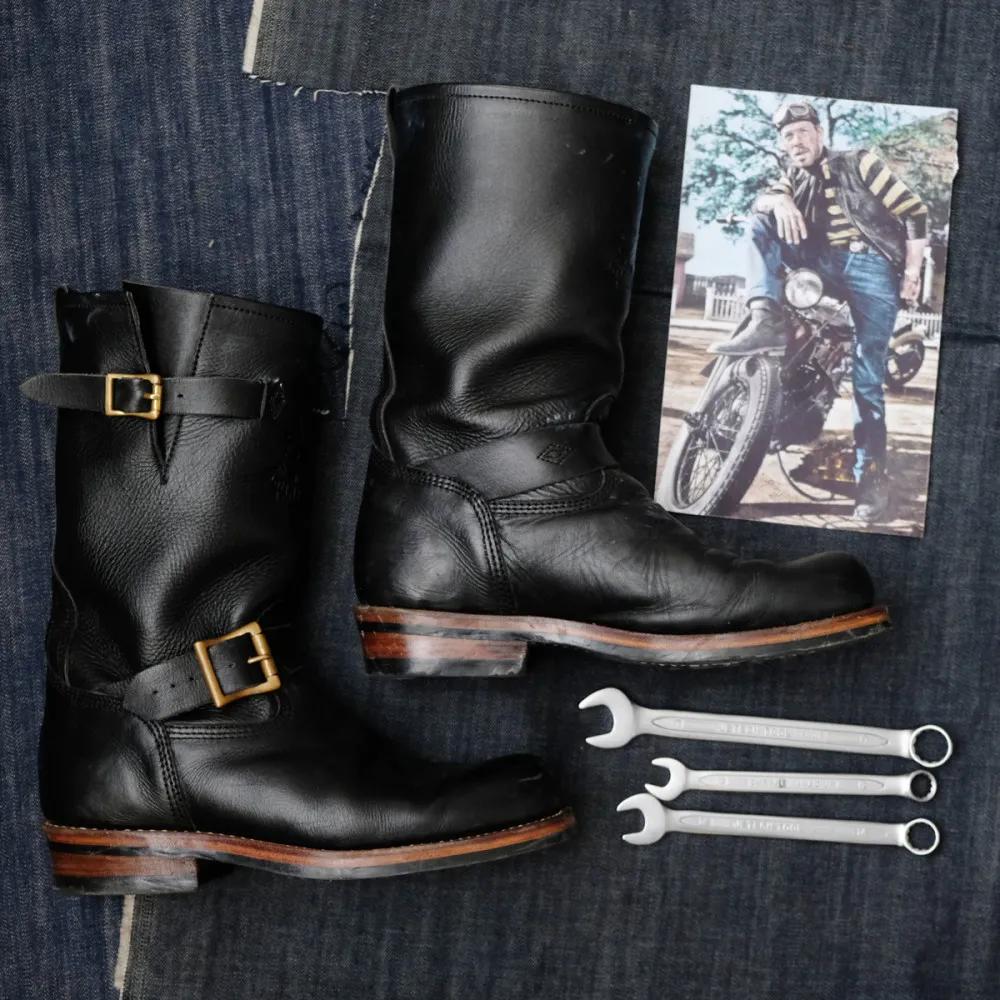
It is said that the designer John Lofgren got the design inspiration from the harness ring boots produced by Frye company in 1860. The ankle strap of the ring boots was connected with a metal ring and was soon adopted by the U.S. cavalry. John Lofgren designed the original engineer boots with twill fabric and traditional tooling boots. However, this view has always been controversial. Some people also say that the engineer boots are designed by the combination of woodcutter boots and British riding boots. By the 1940s, two mature brands chipewa and Wesco had mass produced it, and they were also the first two brands to produce engineer boots.
By the 1940s, two mature brands chipewa and Wesco had mass produced it, and they were also the first two brands to produce engineer boots.
However, there is a saying that chipewa is the origin of engineer boots. In 1937, chipewa used full leather high boots and Goodyear technology to make the first pair of engineer boots in human history, called "the original" chipewa engineer. The semi dress style toe cap made the boots more suitable for working on flat ground. The full leather insole and outsole, plus the metal toe bracket, became the favorite of outdoor workers at that time.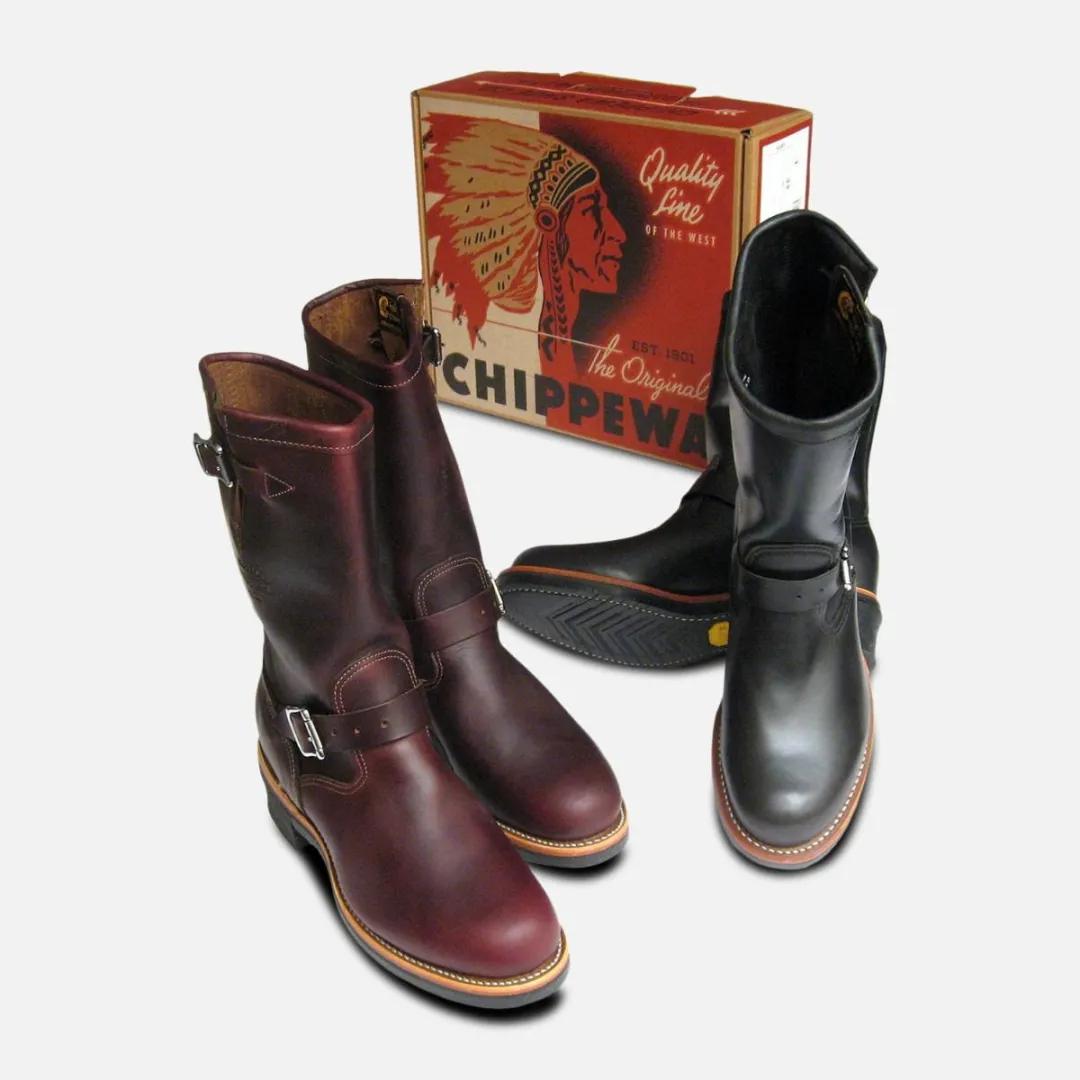
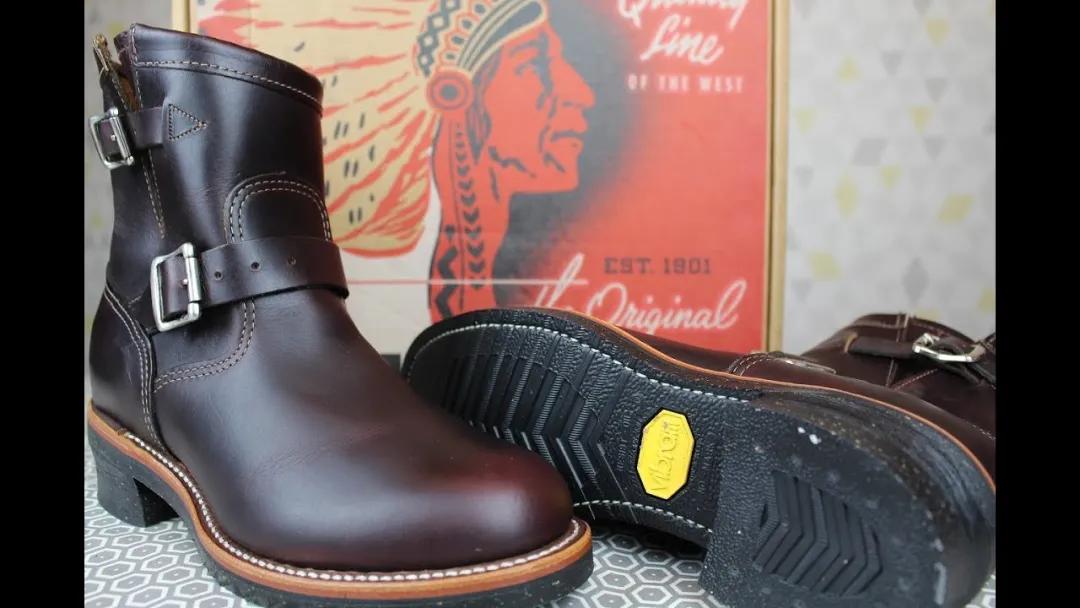
In 1939, the North American heavy boots brand Wesco West Coast shoe factory launched boss engineer boots for the shipping workers in the west coast. At that time, shipyard workers needed to face spattering welding slag every day. This boot could help shipbuilders quickly take off to avoid scalding. Later, Wesco even designed for motorcyclists and produced a variety of boss series. The shoes are full of power and beautiful curves. The rough and beautiful shape of heavy duty is super durable and comfortable, and has become a must for American mounted police and heavy motorcycle enthusiasts.



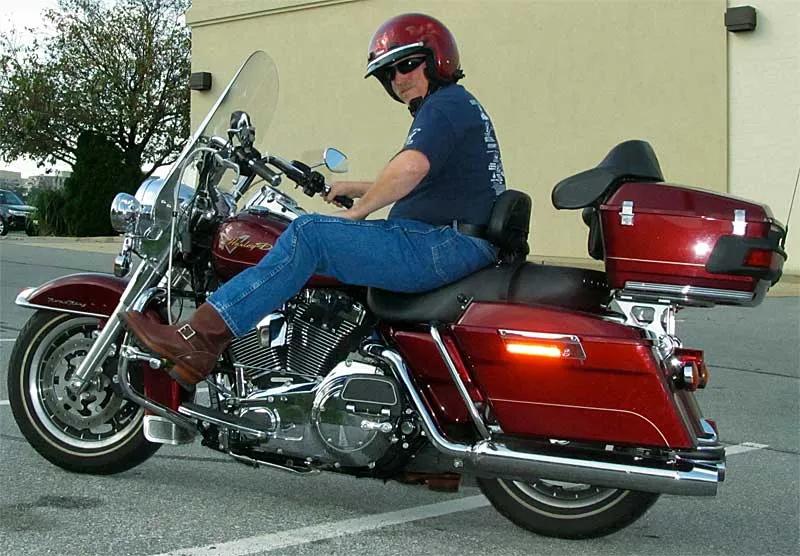
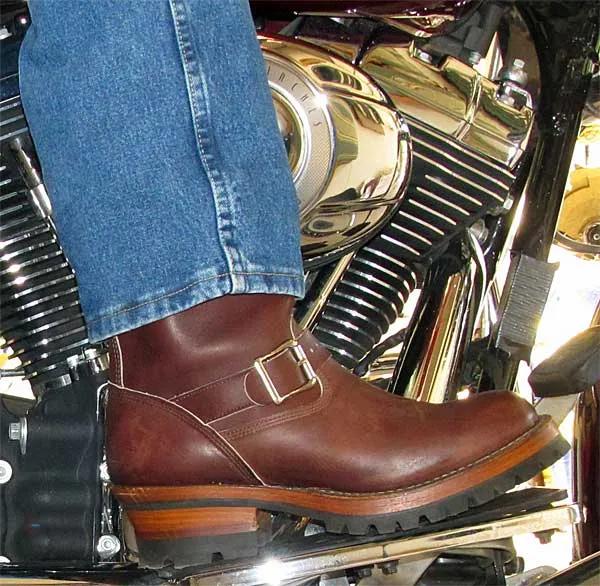
At that time, the image of engineer boots was always closely linked with American motorcycle riders and gas station staff. As the tough guy stars Marlon Brando and James Dean performed in the movies the wild one and rebel without a cause respectively, the engineer boots even became a popular symbol of "rebellion" among American teenagers at that time. T-shirts, jeans and engineer boots, coupled with leather clothes and motorcycles, were definitely the coolest and most fashionable dress of that era.
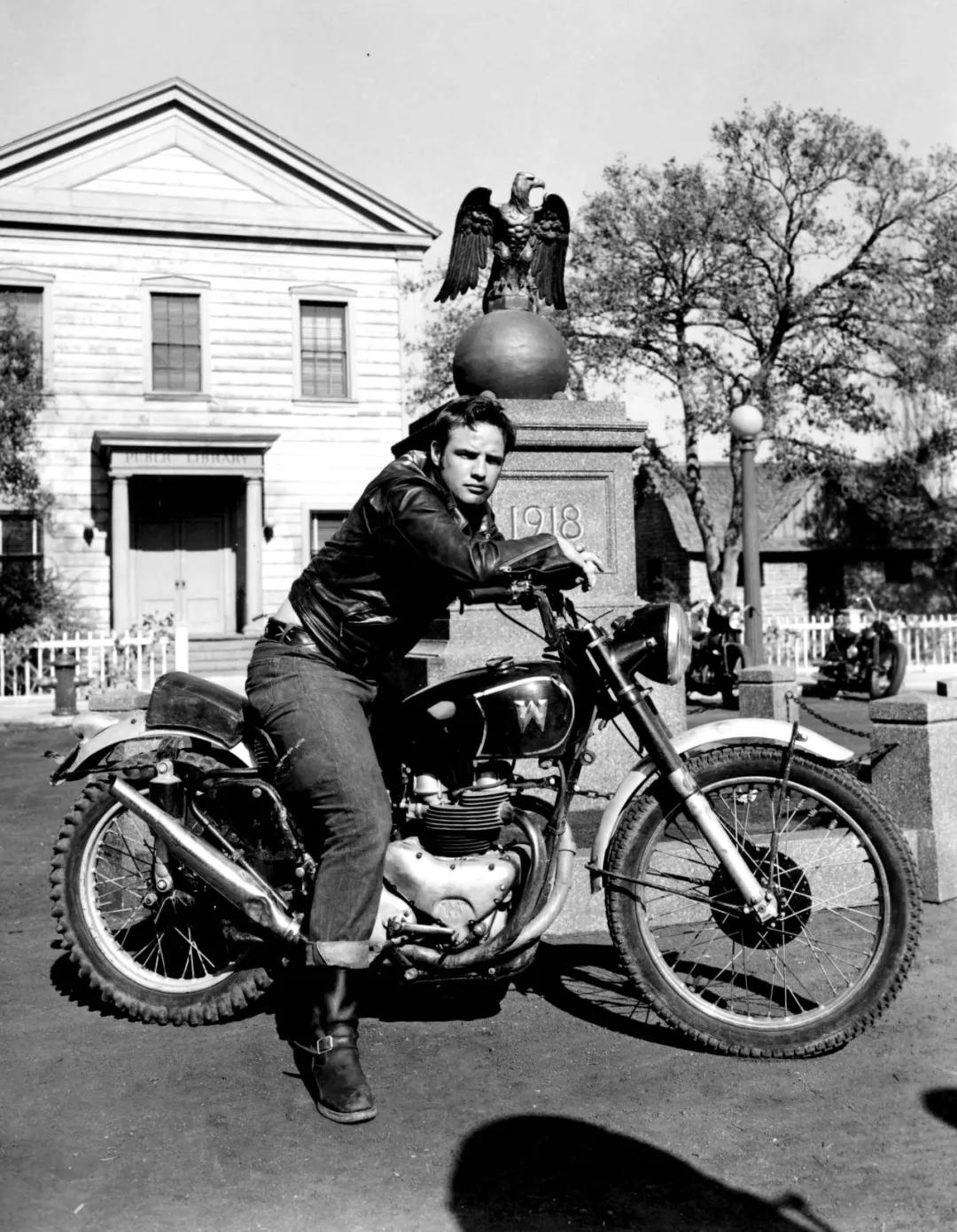
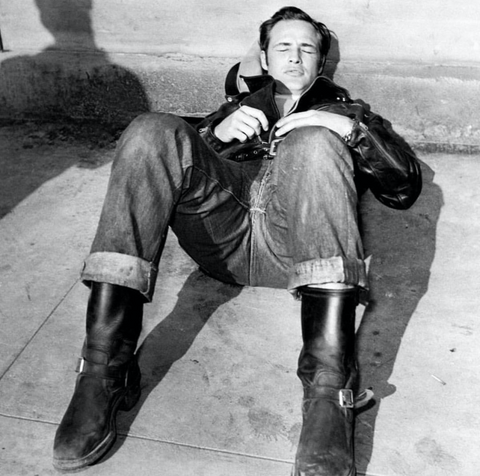
In the late 1960s, engineer boots frequently appeared among gang members and homosexual groups. In the 1970s, the skinheads, one of the bad youth groups, took the engineer boots as a standard item. Later, engineer boots became part of punk fashion, symbolizing power and industrial style.

In short, from the 1950s to the 1970s, famous retail department stores like Sears have always been their main products, so we can see how good the sales are.
Up to now, the engineer boots are still the classic partner of the original cow jeans.
Wearing of engineer boots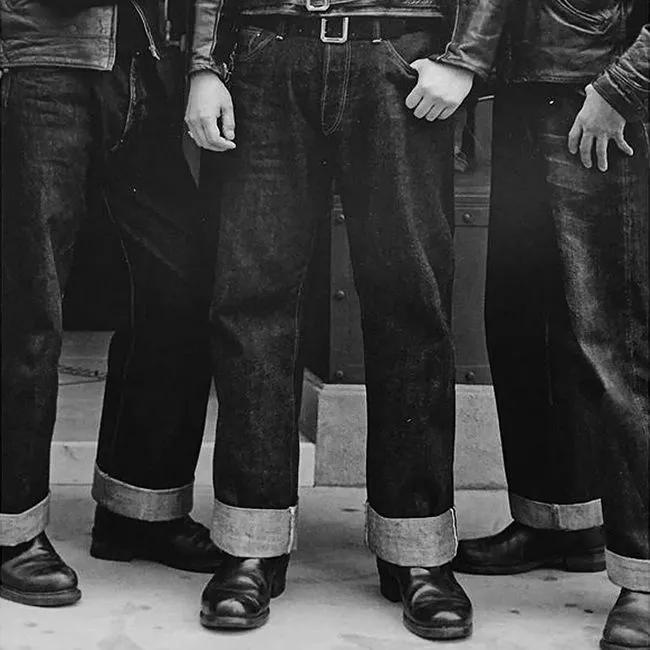
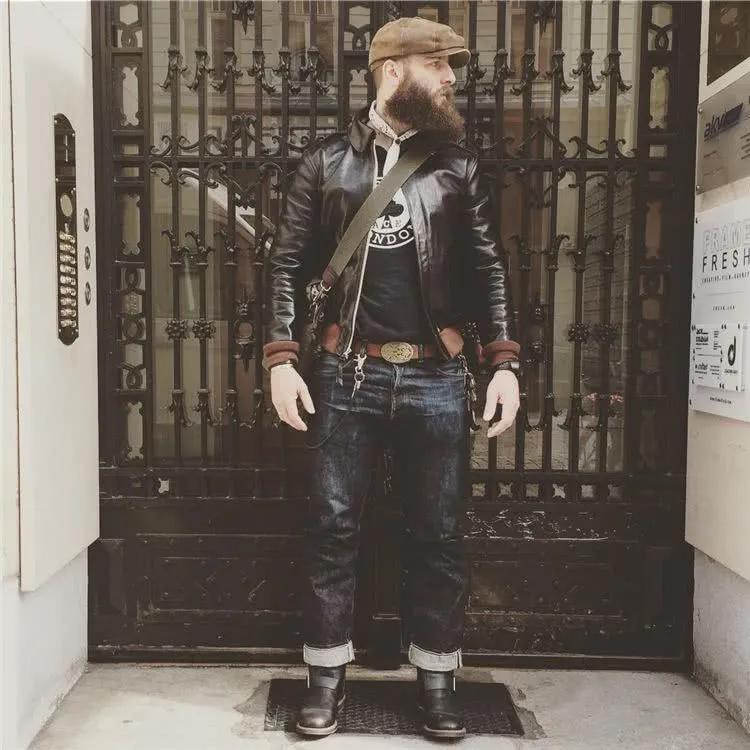
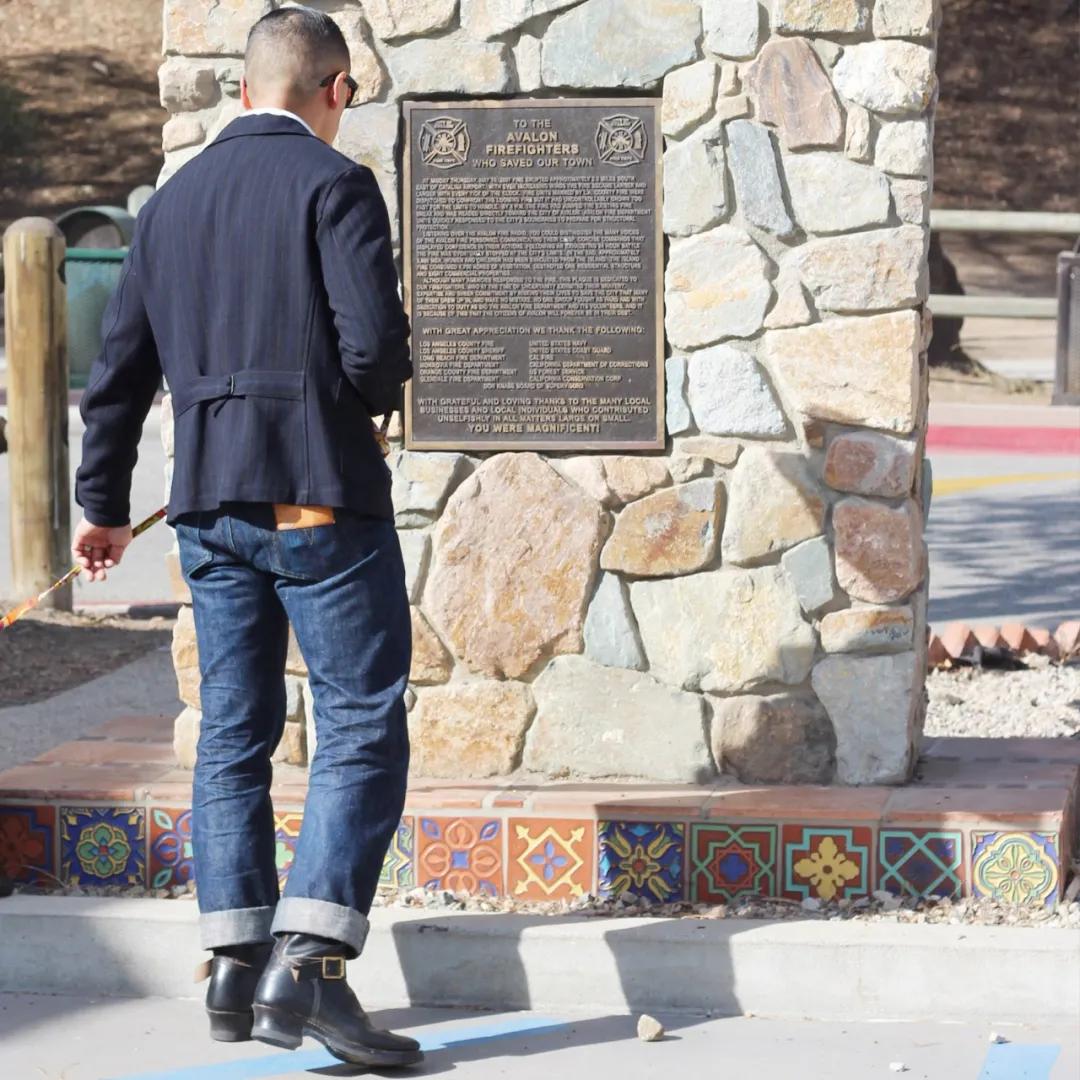
In addition to matching jeans, many men who like retro clothes also wear straight pants, wide leg pants, overalls and engineer boots, and generally follow the wearing method of covering the boot barrel and exposing the upper.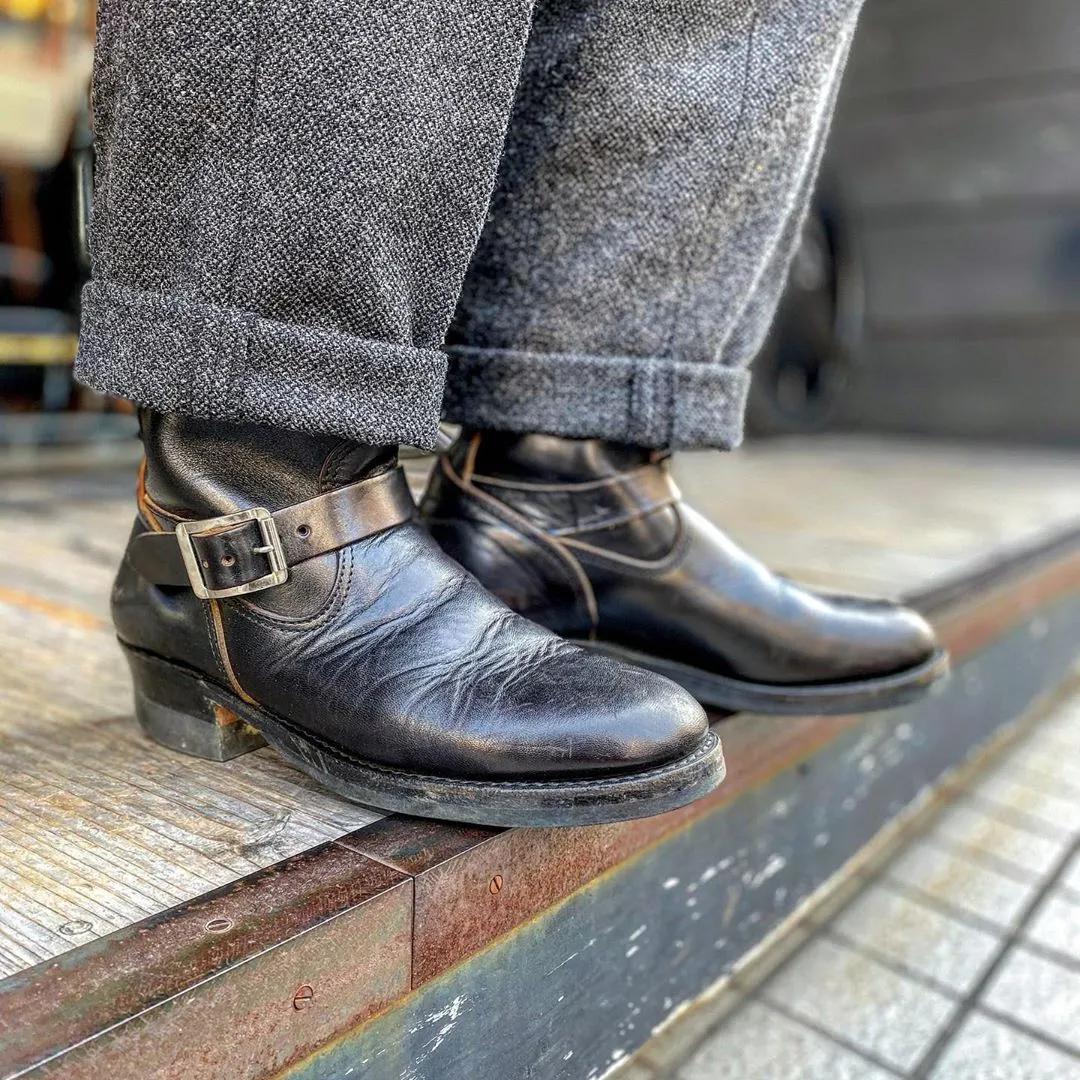
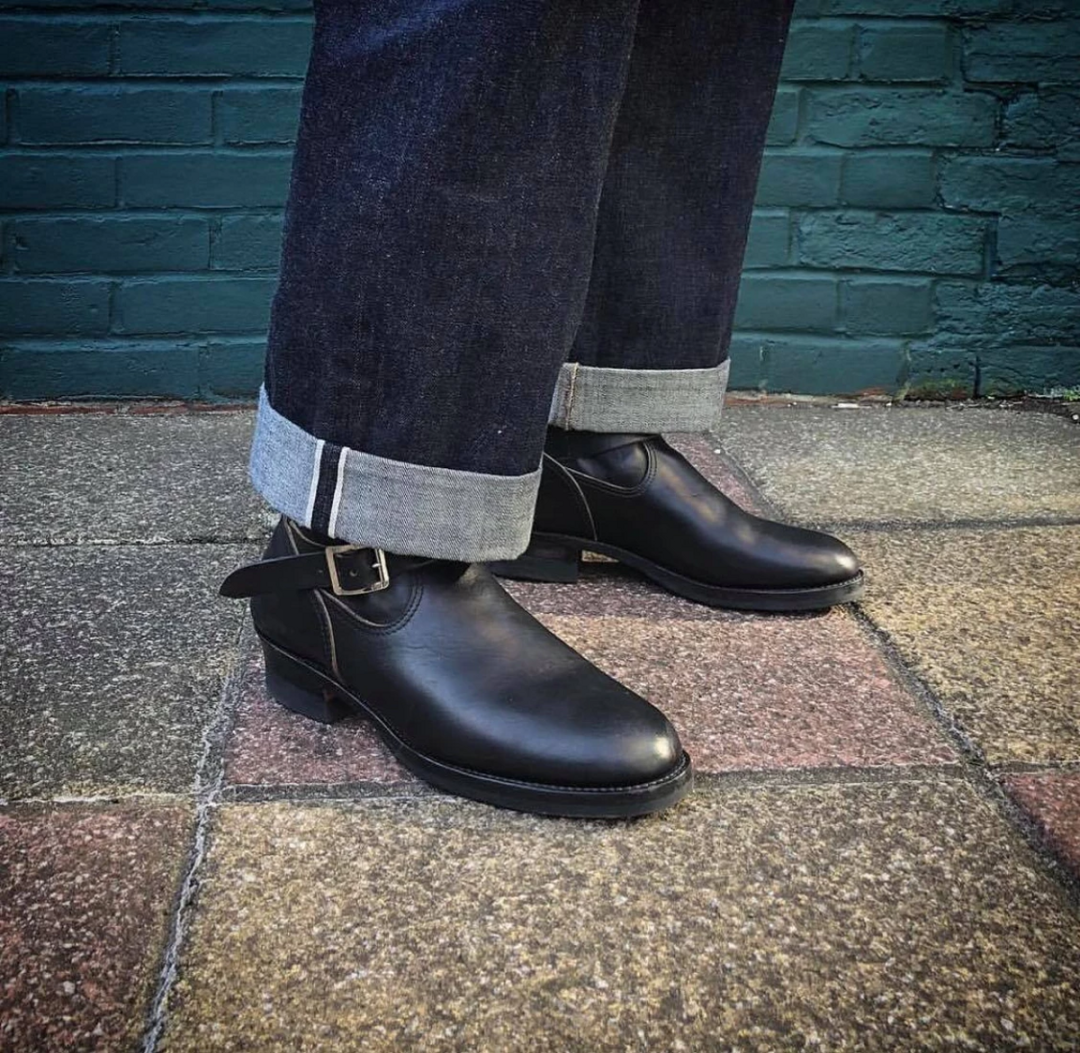
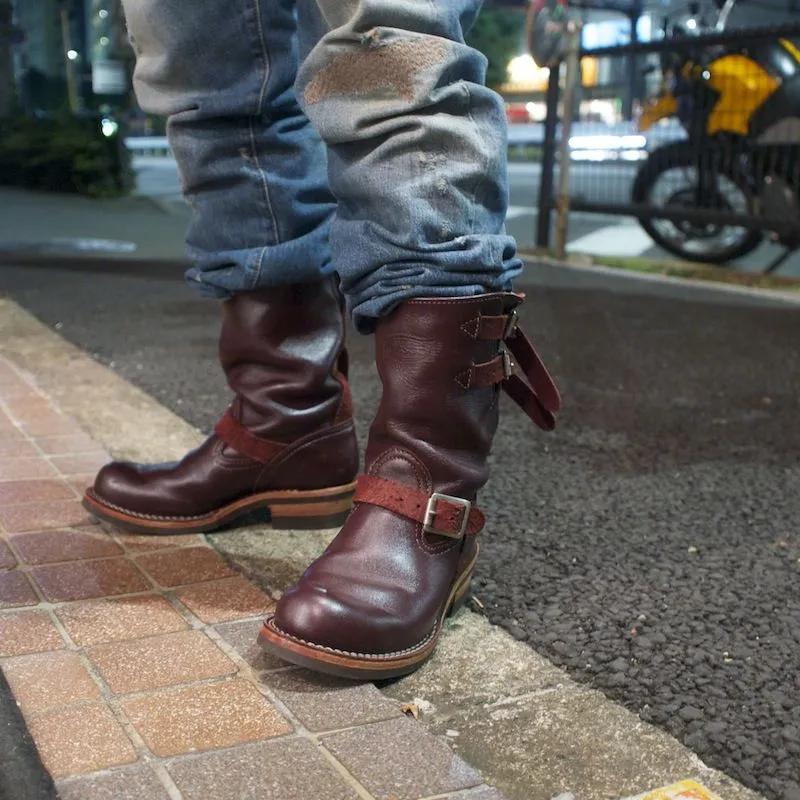
However, back to what I said at the beginning, compared with other tooling boots, the engineer boots are still a relatively unpopular style, because in the eyes of the public, they are indeed a bit too heavy, strange and at first glance not so routine. But this does not prevent it is still the first choice for many motorcycle enthusiasts and many men. Many work wear and boots brands will produce items of this series.
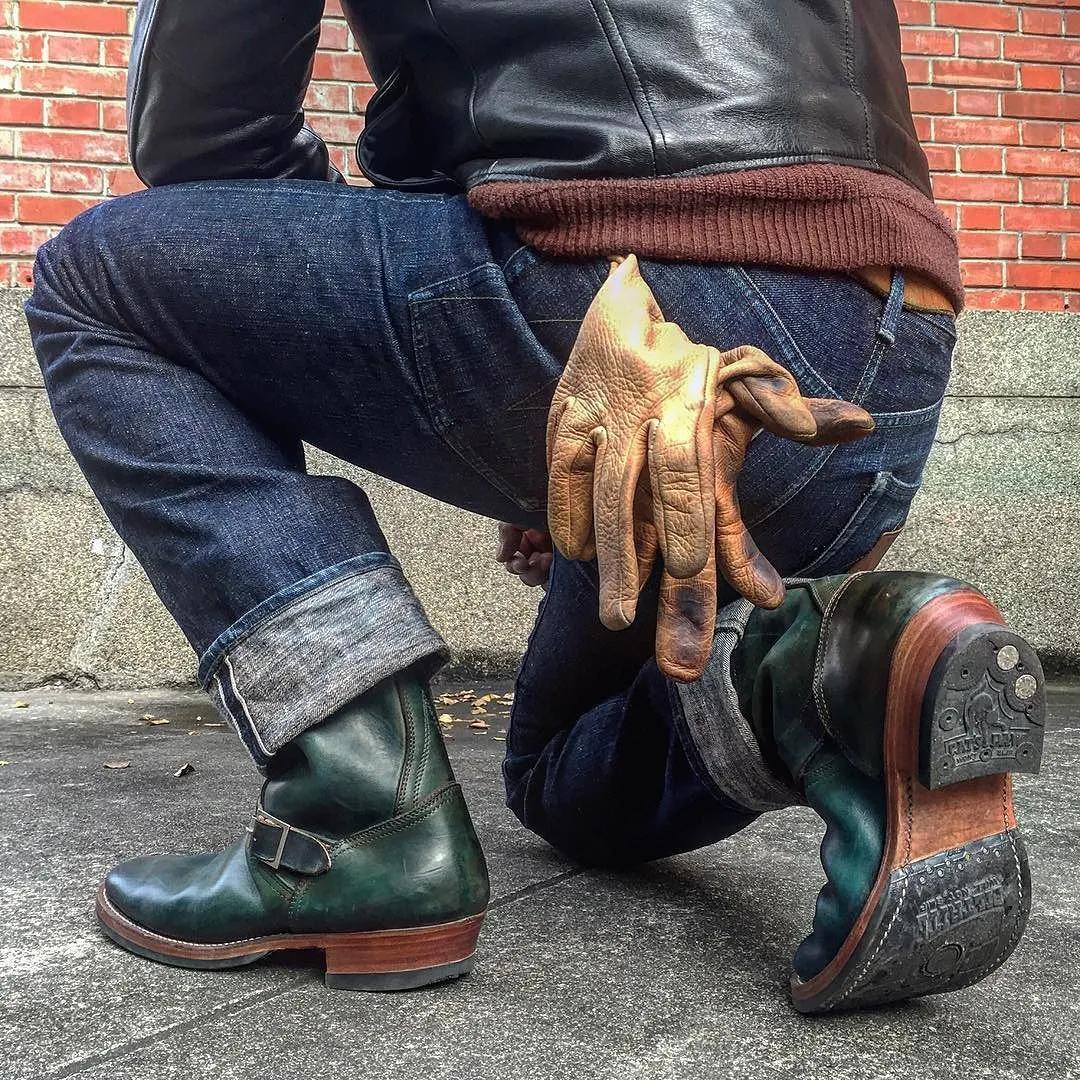
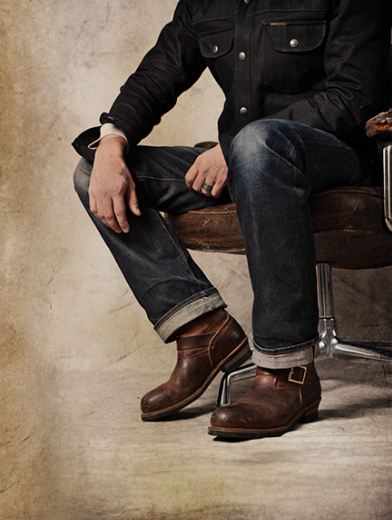
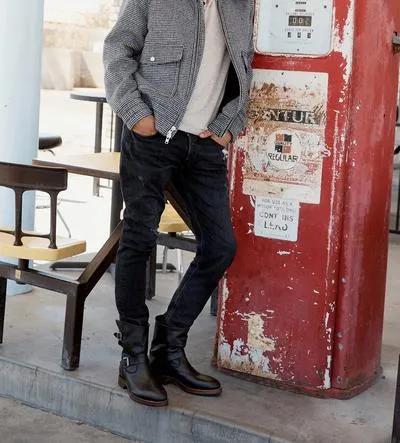
For example, white's, one of the four largest tooling boots in the United States, has always been famous for its characteristics of making shoes for various working classes, selecting various shoe lasts and customizing services. Naturally, it will not miss engineer boots.

Clinch, a Japanese tooling shoe brand, is very craftsman in the details of workmanship and last design. It only takes some time and patience to receive a single product. It usually takes 6-10 months from ordering to receiving.
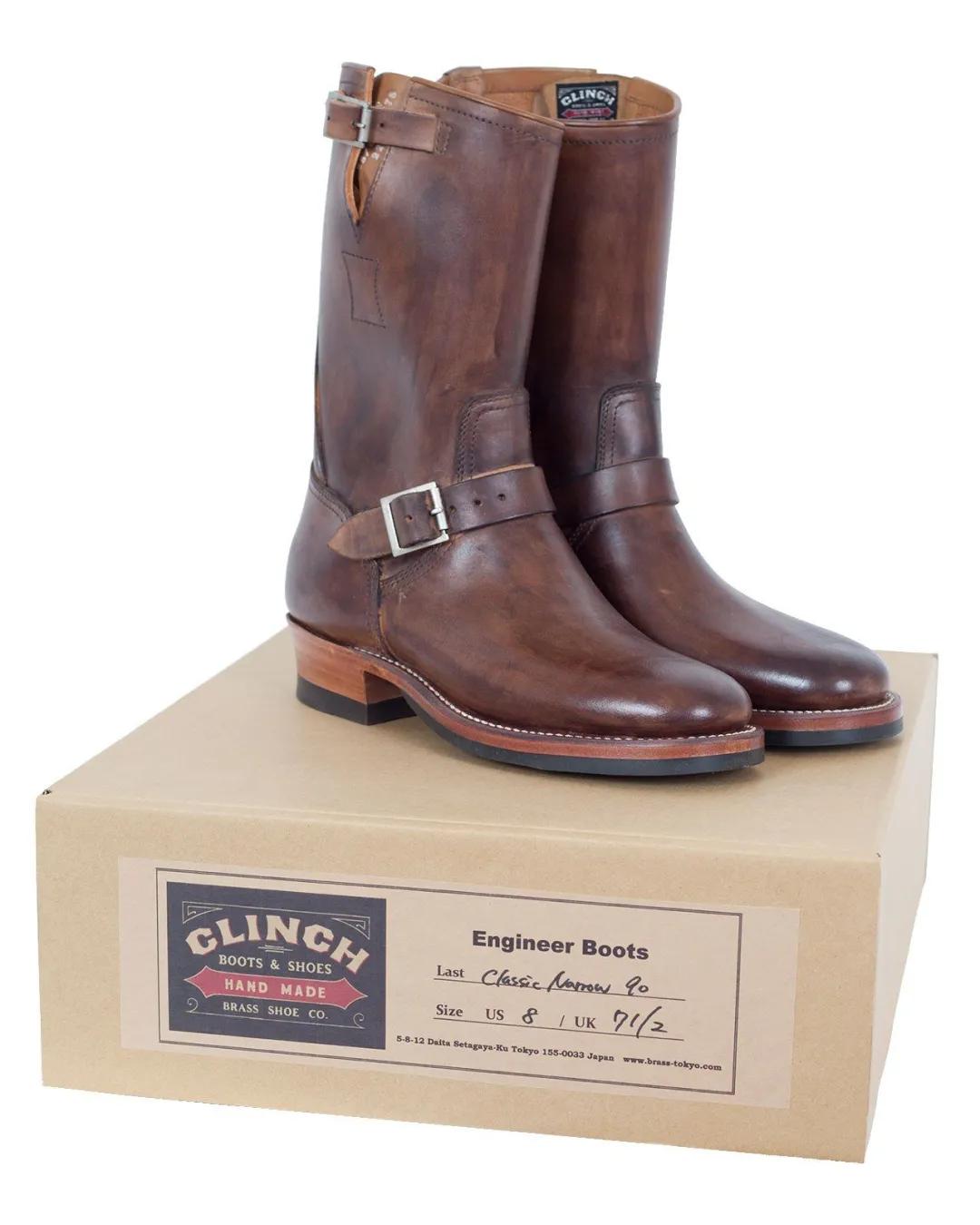

Trophy clothing, a Japanese retro clothing brand founded in 2005, has also launched its own series of engineer boots. The managing director, zhenshu Jiangchuan, is very obsessed with American motorcycle culture and works with designers of neighborhood/tenderloin/ rugged
Several people are members of the Tokyo indian's Club
Therefore, the series of works of the brand show his enthusiasm for motorcycles.
It also draws inspiration from American retro military uniforms and tannins
In addition, Mr. Jiangchuan has collected many ancient books as a tailor
Therefore, the design concept of clothing has maintained a high level
And the locomotive retro culture and exquisite tailoring are perfectly combined
In a word, it is a relatively low-key but not negligible Japanese brand.



Classic arrow engineer boots Black tea core vegetable tanned leather until 2019
The wrinkled toe cap has a good aging effect after tea Later, Mr. Jiangchuan used suede engineer boots.The same last shape brings a different wearing experience.The aging effect is still amazing after one year of daily riding
Therefore, trophy clothing made this boot on a small scale.
Mr. Jiangchuan prefers this pair of beige suede engineer boots to another black engineer boots that have been transformed into tea. It may be that the light beige engineer boots are not so boring and easy to match, or it may be that the traces left by the gear on the bicycle are more meaningful In a word, in Mr. Jiangchuan's many riding and daily matching pictures, we can see this aging suede engineer boot.
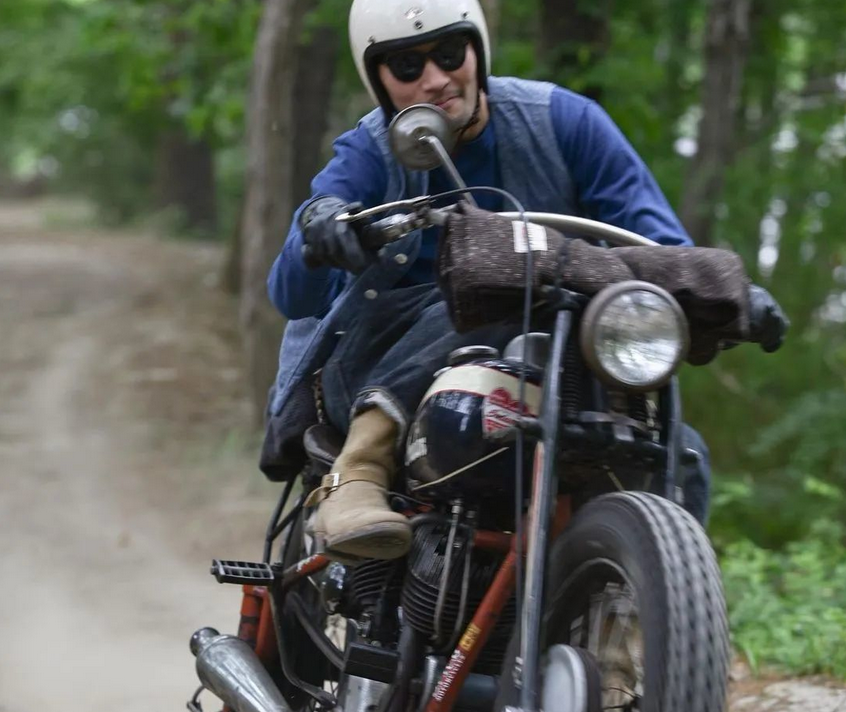
The leather is soft waxy Beige cowhide suede. The overall color is light and the nap is short and smooth. A little effort can make the leather surface wrinkled and deformed. It is more comfortable than those iron boots.
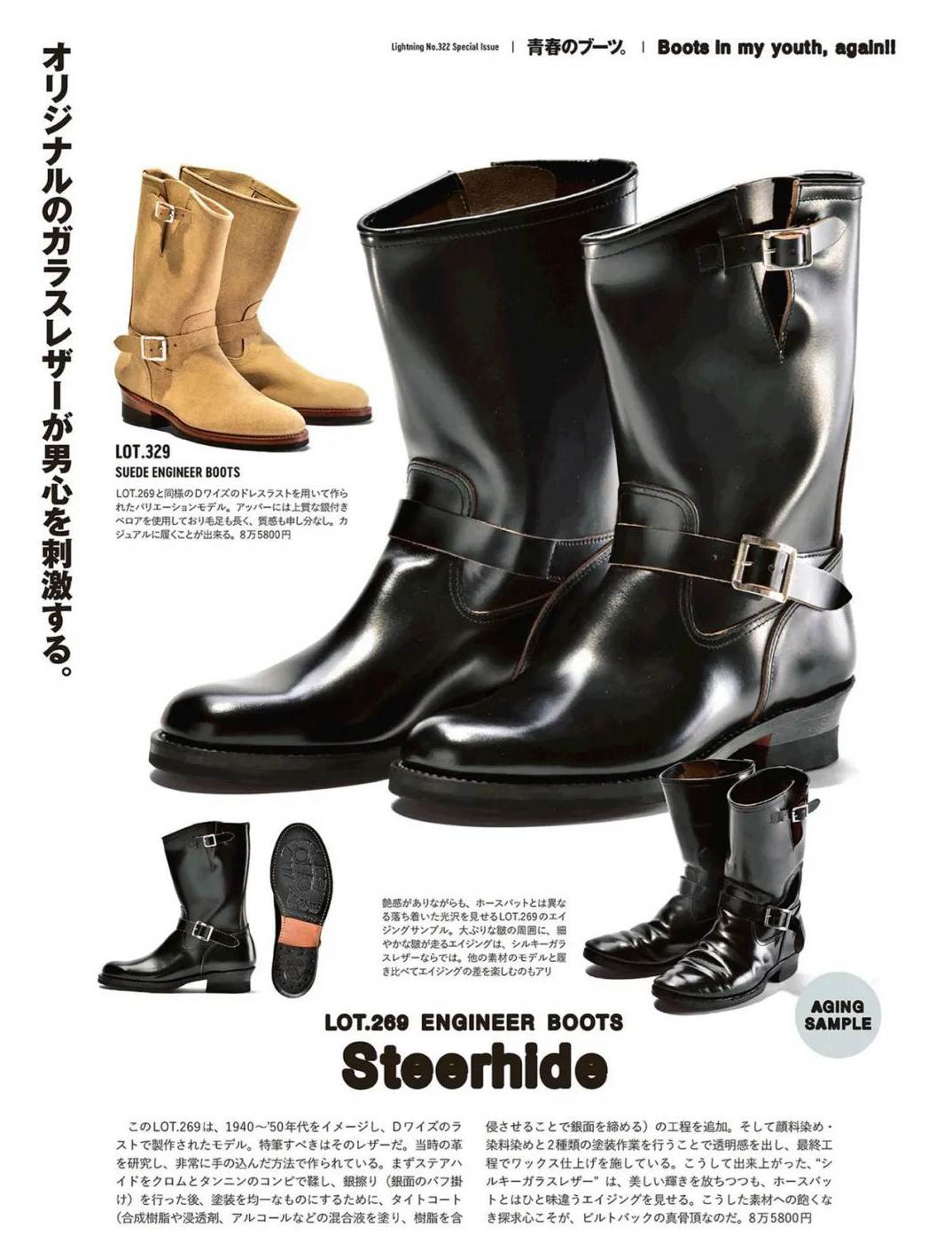

Trophy clothing sells Beige cowhide suede for $1300
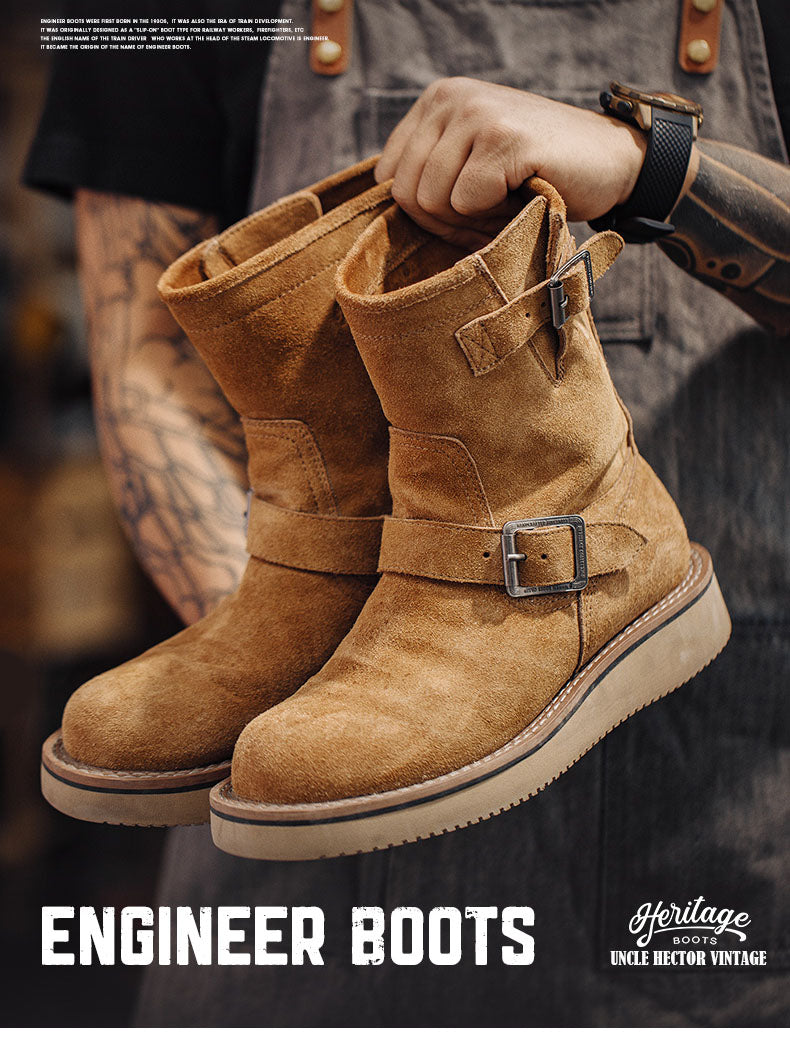
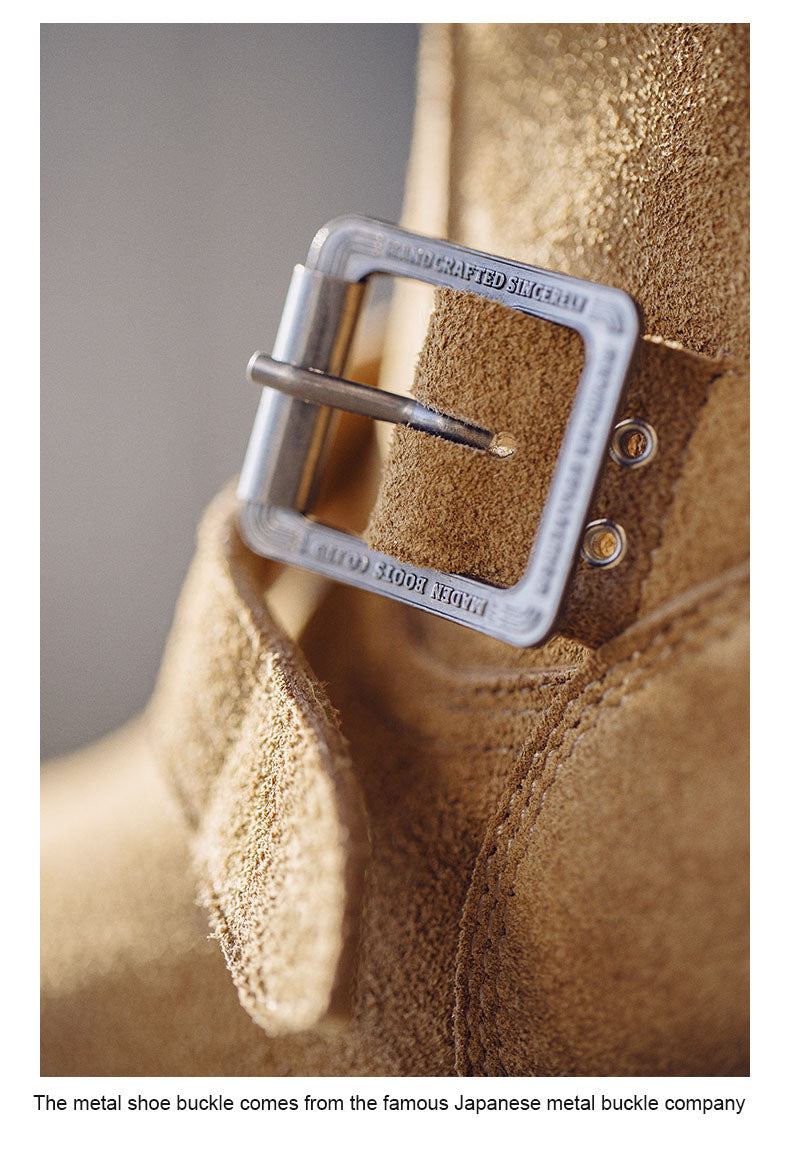
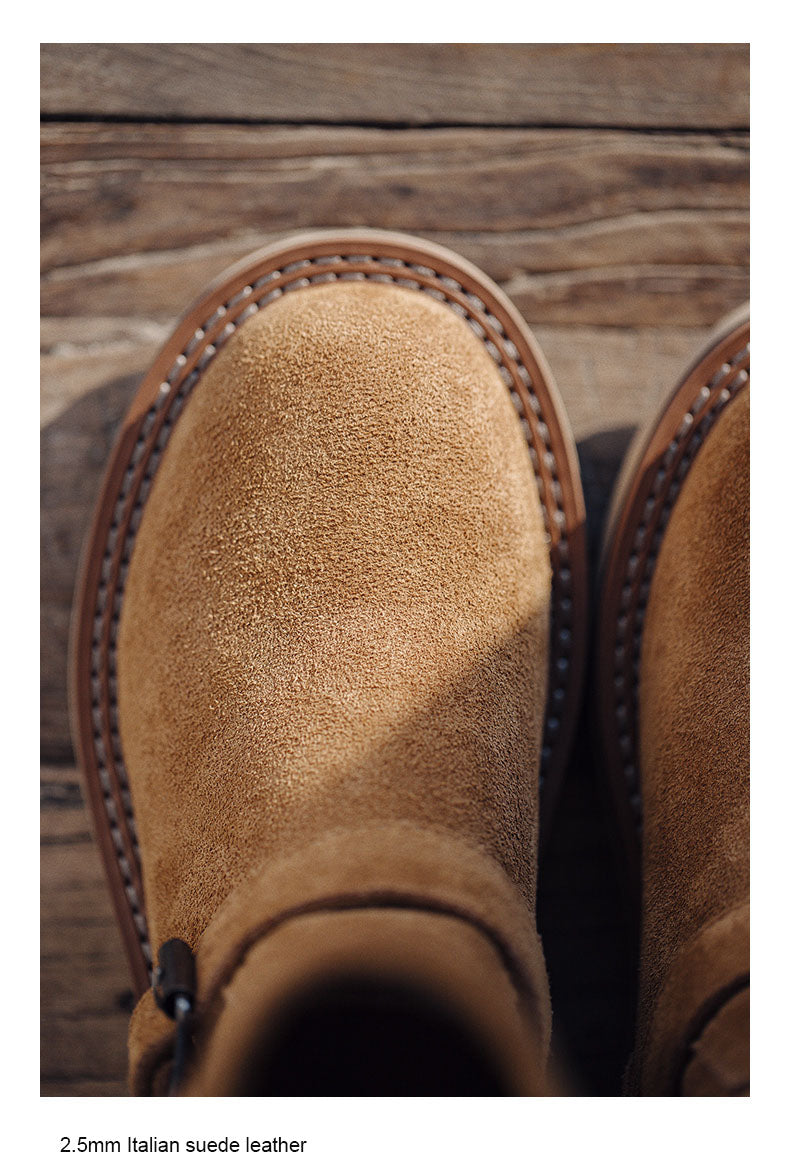

The hardware of the two adjusting belts on the boot surface and the boot barrel is made of nickel plating. The thickness and weight are standard and not too prominent. Thanks to the soft leather, it is easier to operate when adjusting.
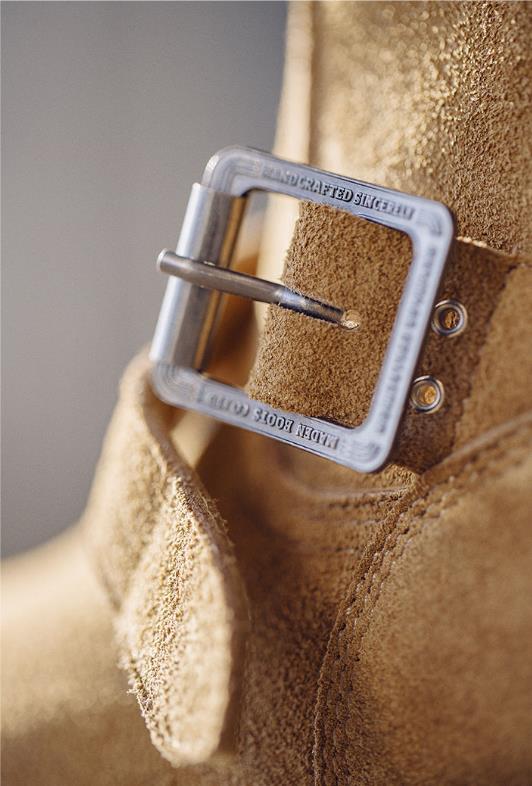
Let's take a look at the actual effect of unclehector's engineer boots The flat toe really shows a completely different temperament, and the suede itself has its own artistic flavor Thanks to the foam rubber outsole, the sole is very soft.
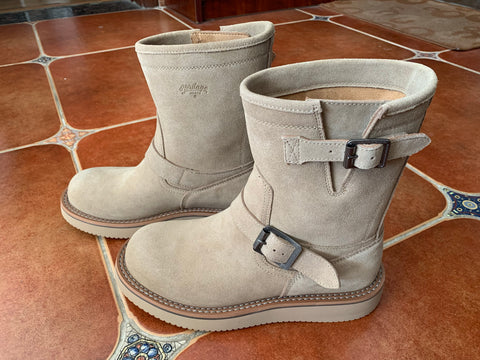
At present, the price of unclehector's engineer boots is very suitable for beginners.
----------
